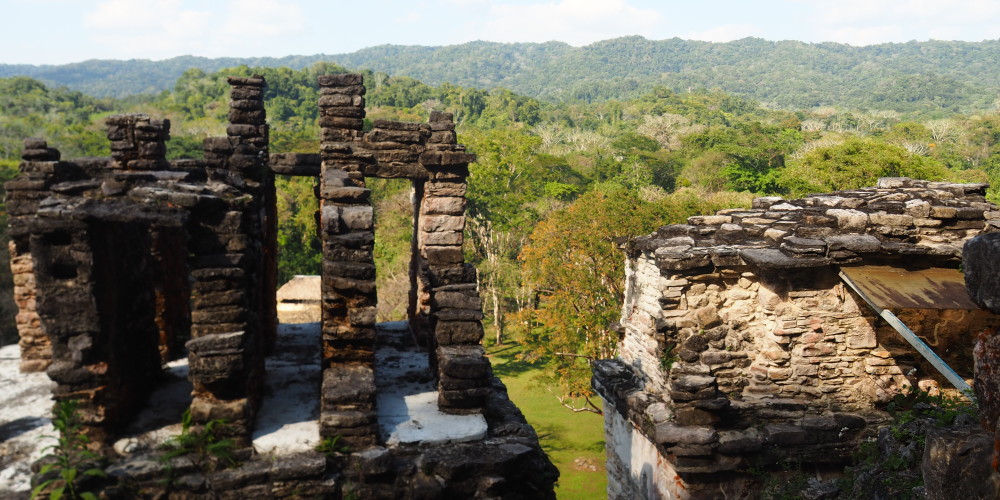The Chiapas Region in Mexico is particularly renowned for the ancient Mayan civilisations (or ruins) of Palenque, Yaxchilan, Bonampa and Chinkultik; as well as one of the highest proportions of indigenous populations in Mexico. We were fortunate enough to be able to visit three of these ruins in our four days in the region.
After flying from Mexico City to Villahermosa (with Volaris Air, just over an hour flight), we then waited at the airport for the two hour bus that would take us to Palenque. Palenque is a relatively small town which owes its name to the closely located ruins.
We stayed at Hotel Chablis in the pedestrianised, cobblestoned (and pretty touristic) part of town. We were the only Aussies we came across, most of the travellers were Mexicans, Americans or Europeans (all of whom spoke fluent Spanish). So we pretty much did not hear English, apart from our hired guides at the ruins for these four days!
The great thing about Hotel Chablis was its lovely refreshing pool, and its clean, air-conditioned rooms. The bad thing about Hotel Chablis is that I am pretty sure their room service food gave me what is lovingly referred to as Montezuma’s Revenge, or, travellers’ diarrhoea. Not fun, but like I said, at least I was in air conditioning for the 24 hours when things were particularly dicey!
Now that I have gotten that important information (it’s not all roses and tea parties over here, folks!) out of the way, let me share a bit about the ruins we visited.
First cab off the rank was a day trip out to two of the ruins – Yaxchilan and Bonampak. Requiring a three hour drive to get to these, which are right on the border of Guatemala, we left the hotel at 6am and arrived at the first, Yaxchilan (pronounced Ya-sha-lan), mid morning.
Yaxchilan
Yaxchilan is located on the banks of the Usumacinta River and only accessible by an hour long boat ride in a motorised canoe. This was a pretty cool way to up the anticipation factor in the lead up to our first Mayan ruins.
The boat ride – jungle on either side!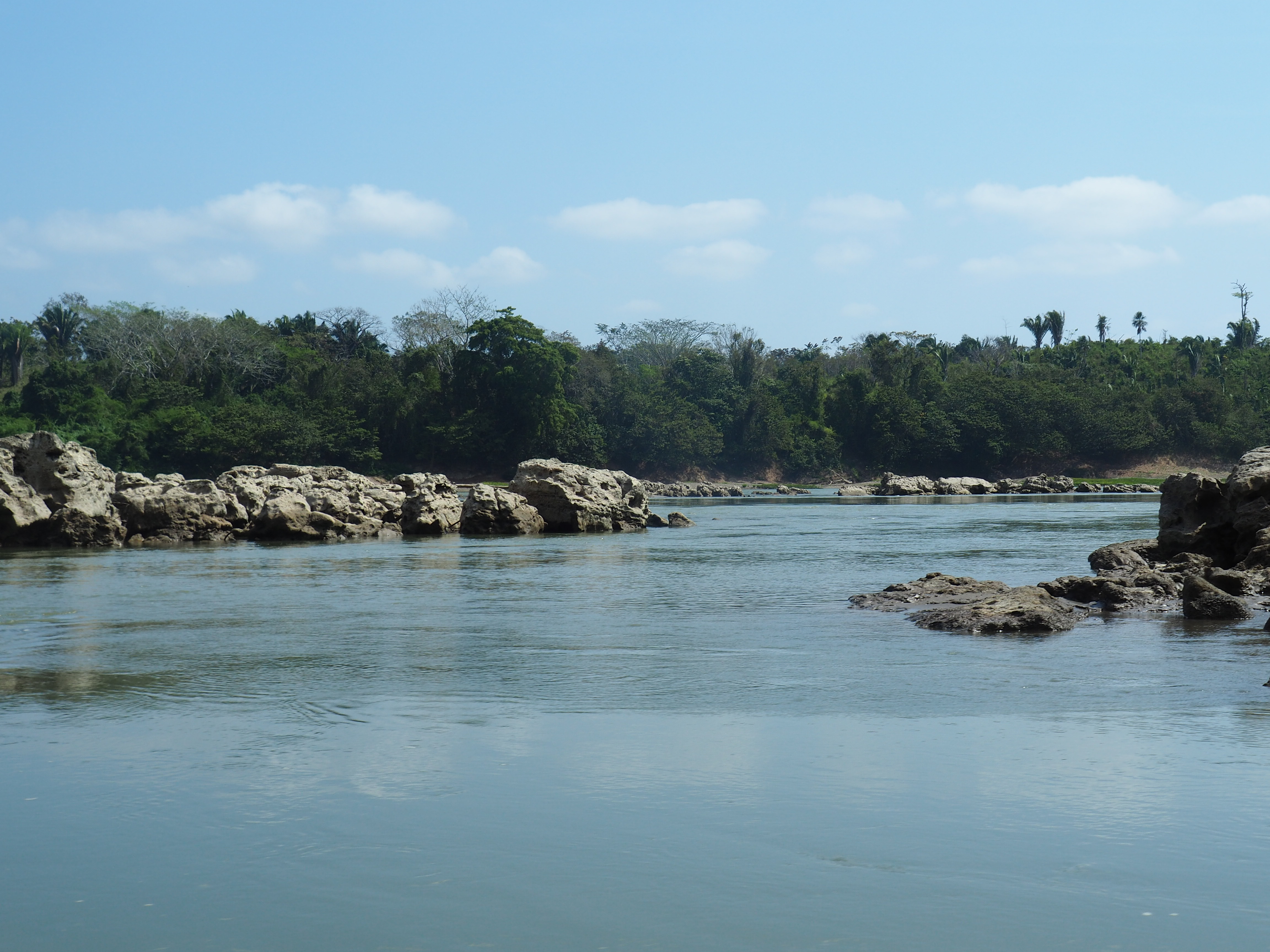
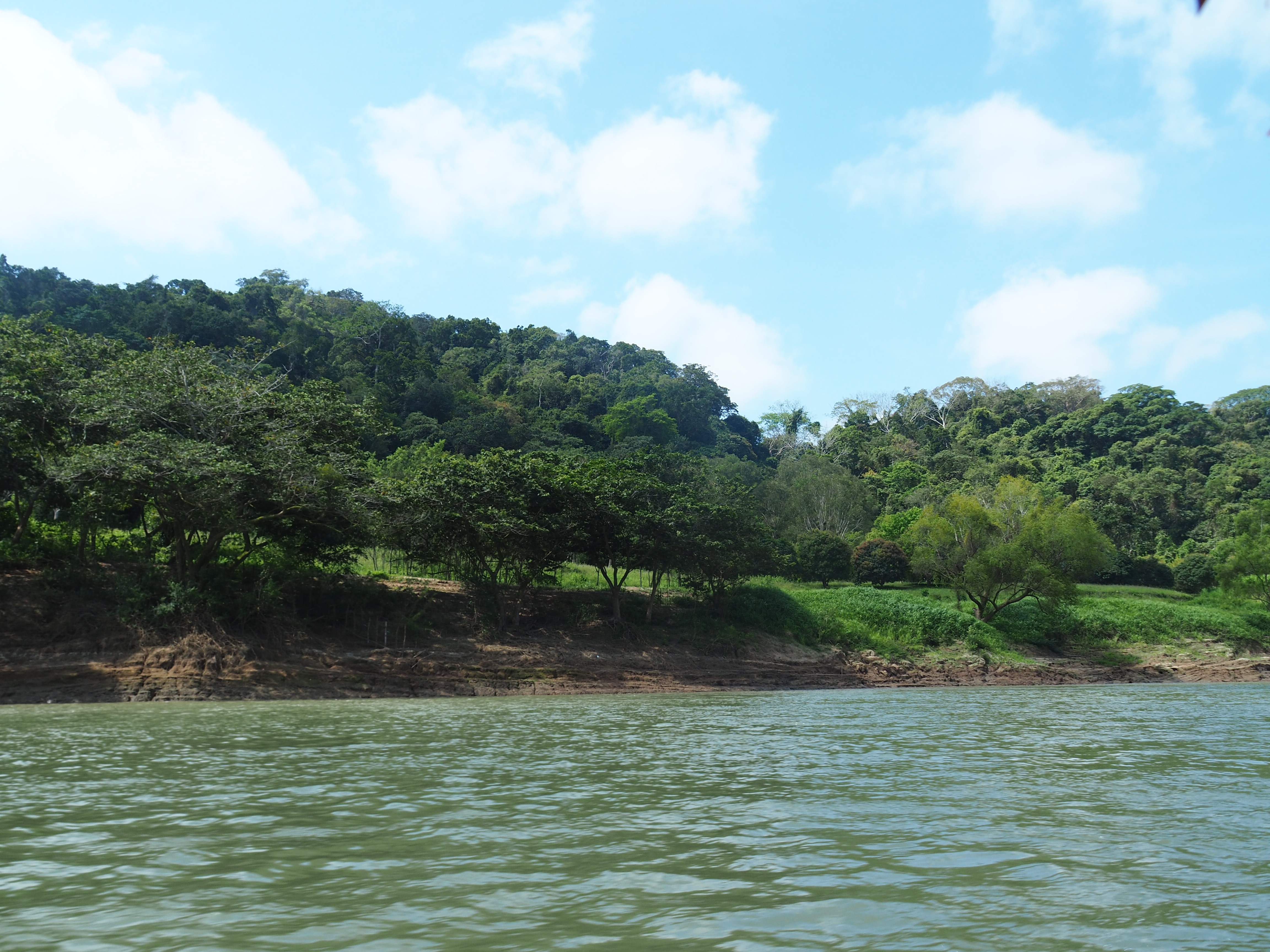
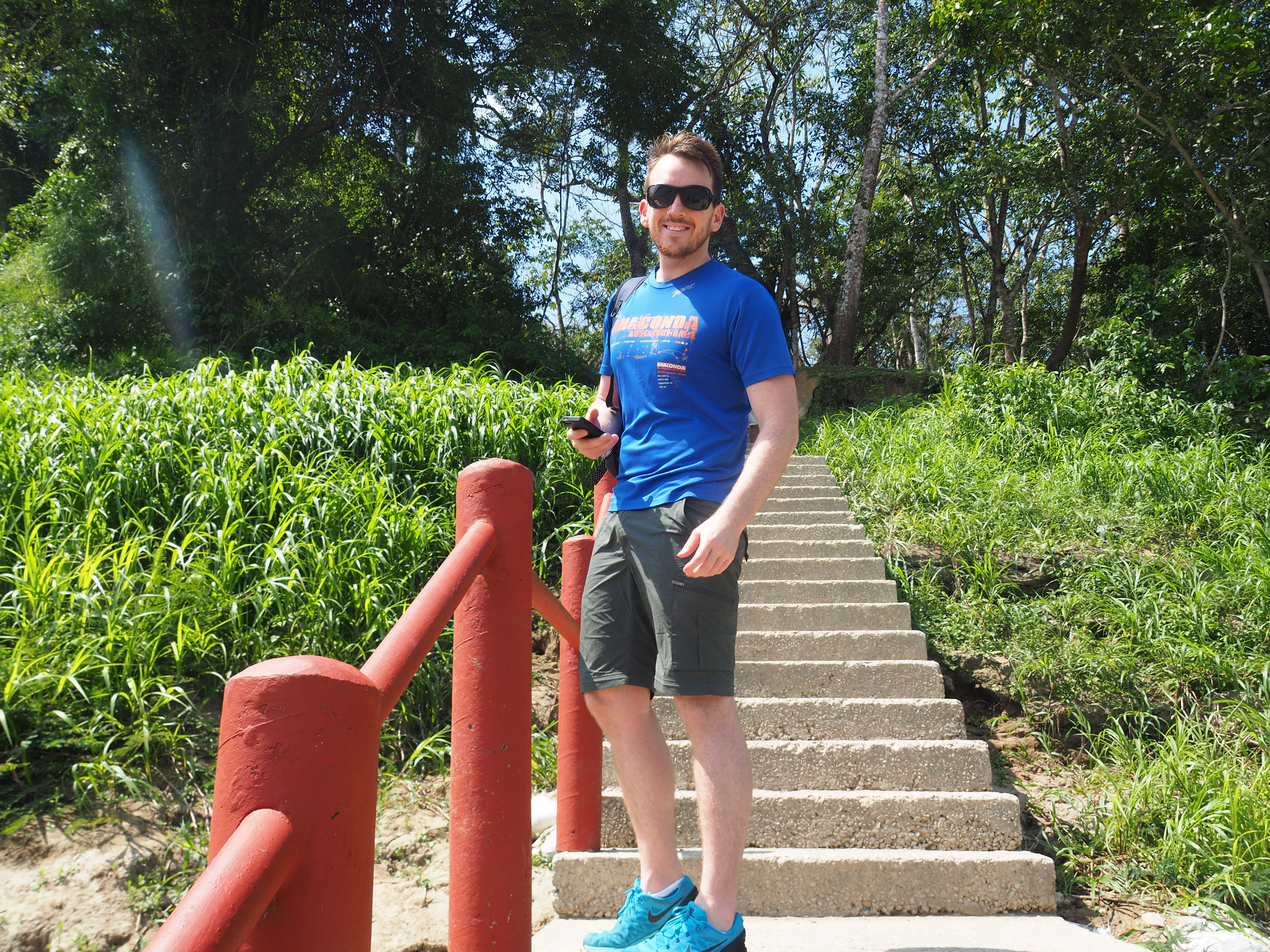
The below photo shows best what the ruins look like now – I am sure the grounds must be maintained somewhat to keep the grass short where tourists can access, but otherwise the ruins just jut right out of the ground, with the jungle all around and huge trees everywhere that are seemingly reclaiming their ancient lands.
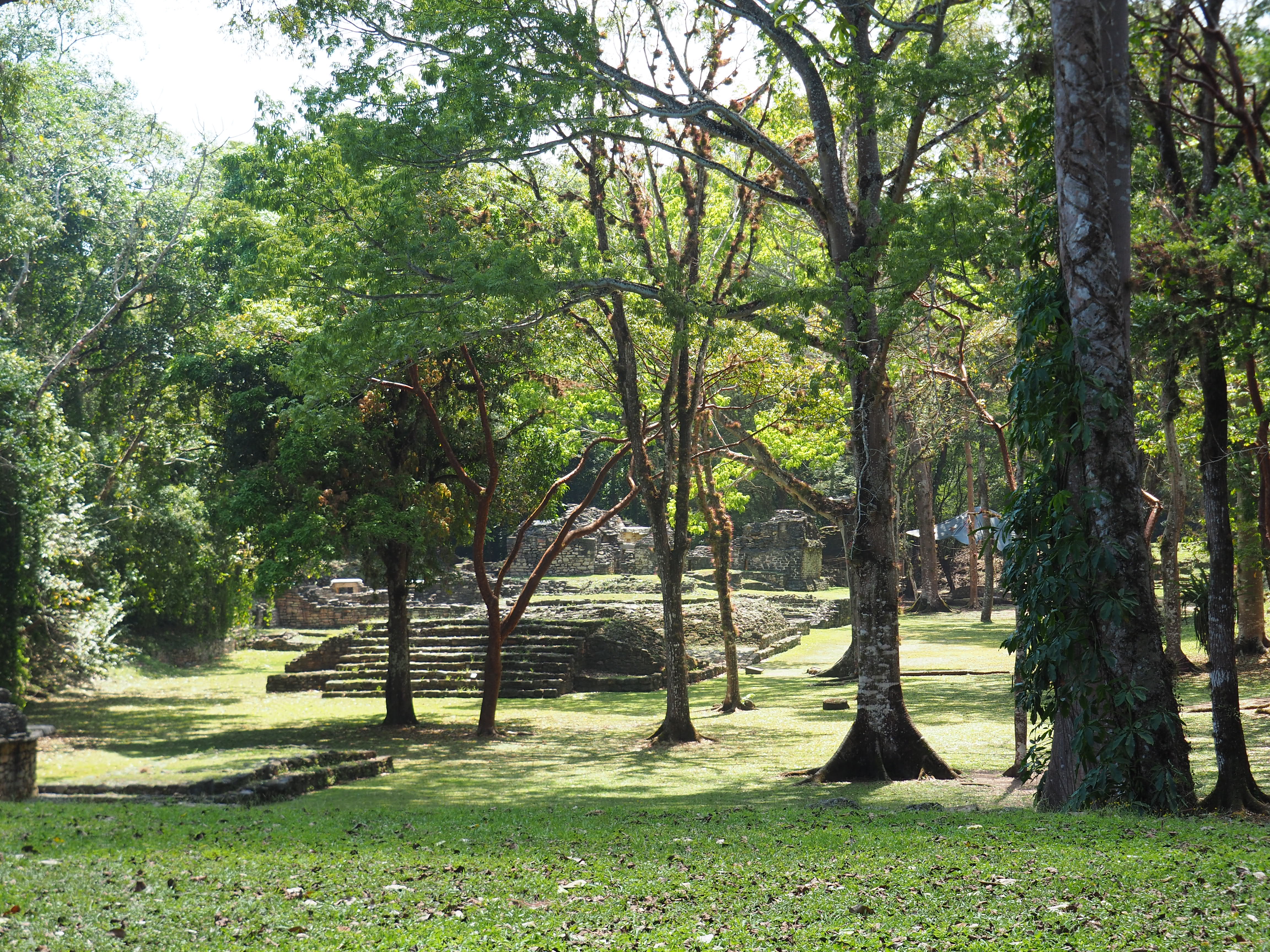
As our first jungle ruins, we were pretty impressed by the impressive structures – or what is left of them – with palaces and temples bordering a large plaza upon a terrace above the Usumacinta River. The remains of the city extend across the higher terraces and the hills to the south of the river, overlooking both the river itself and the lowlands beyond.
Ruins as far as the eye can see, and as far up hundreds of steps as the legs can carry!
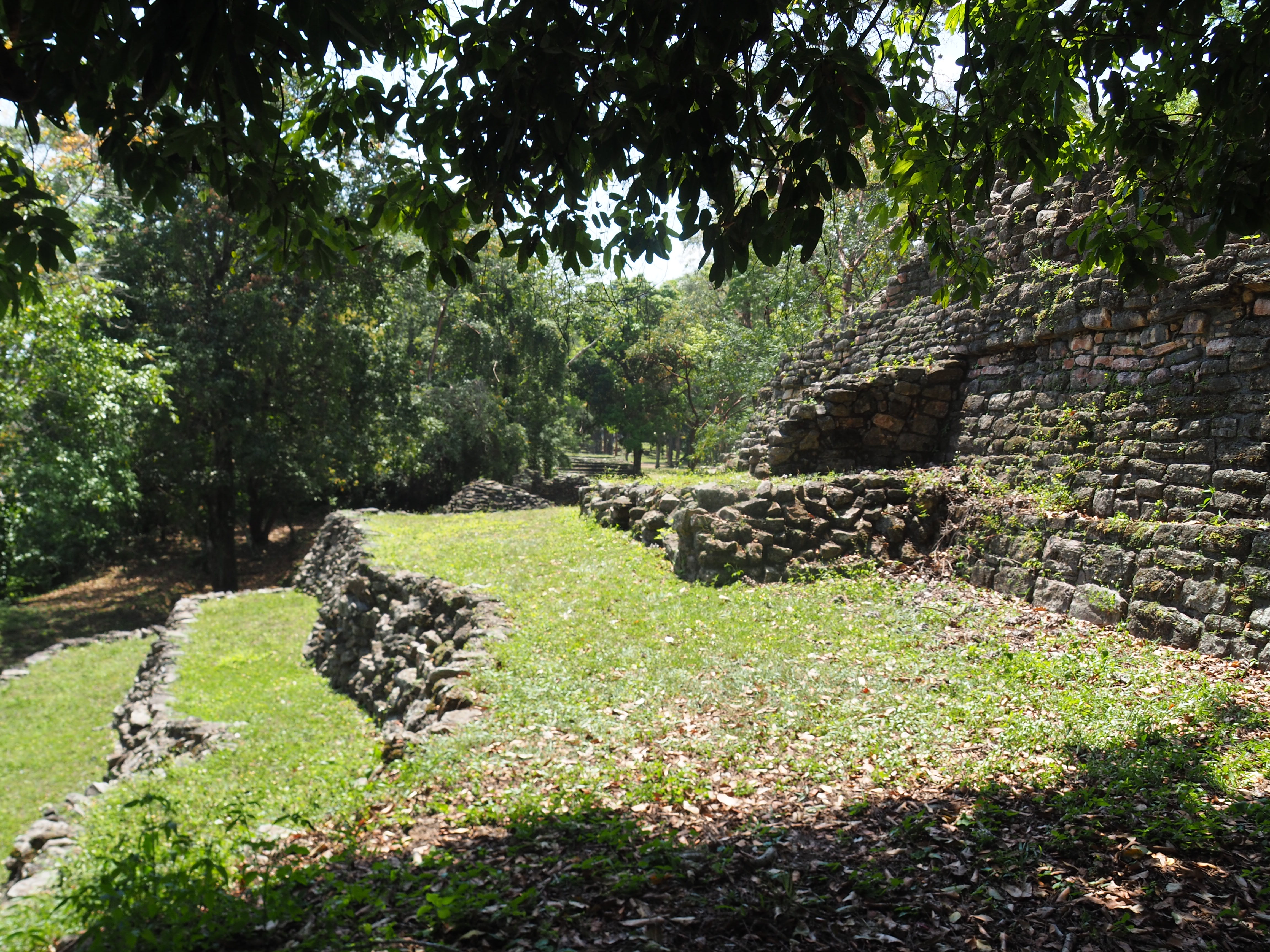
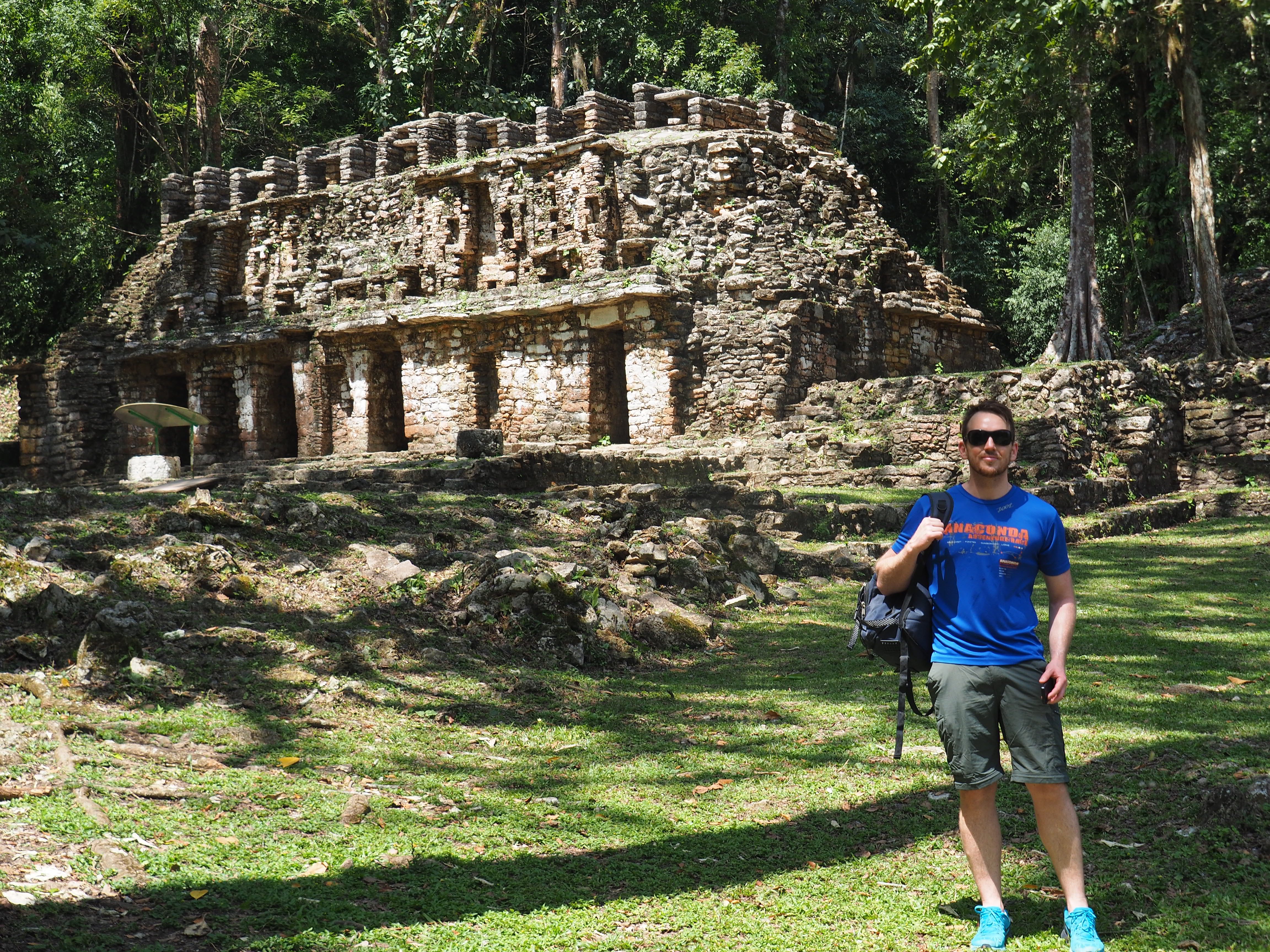
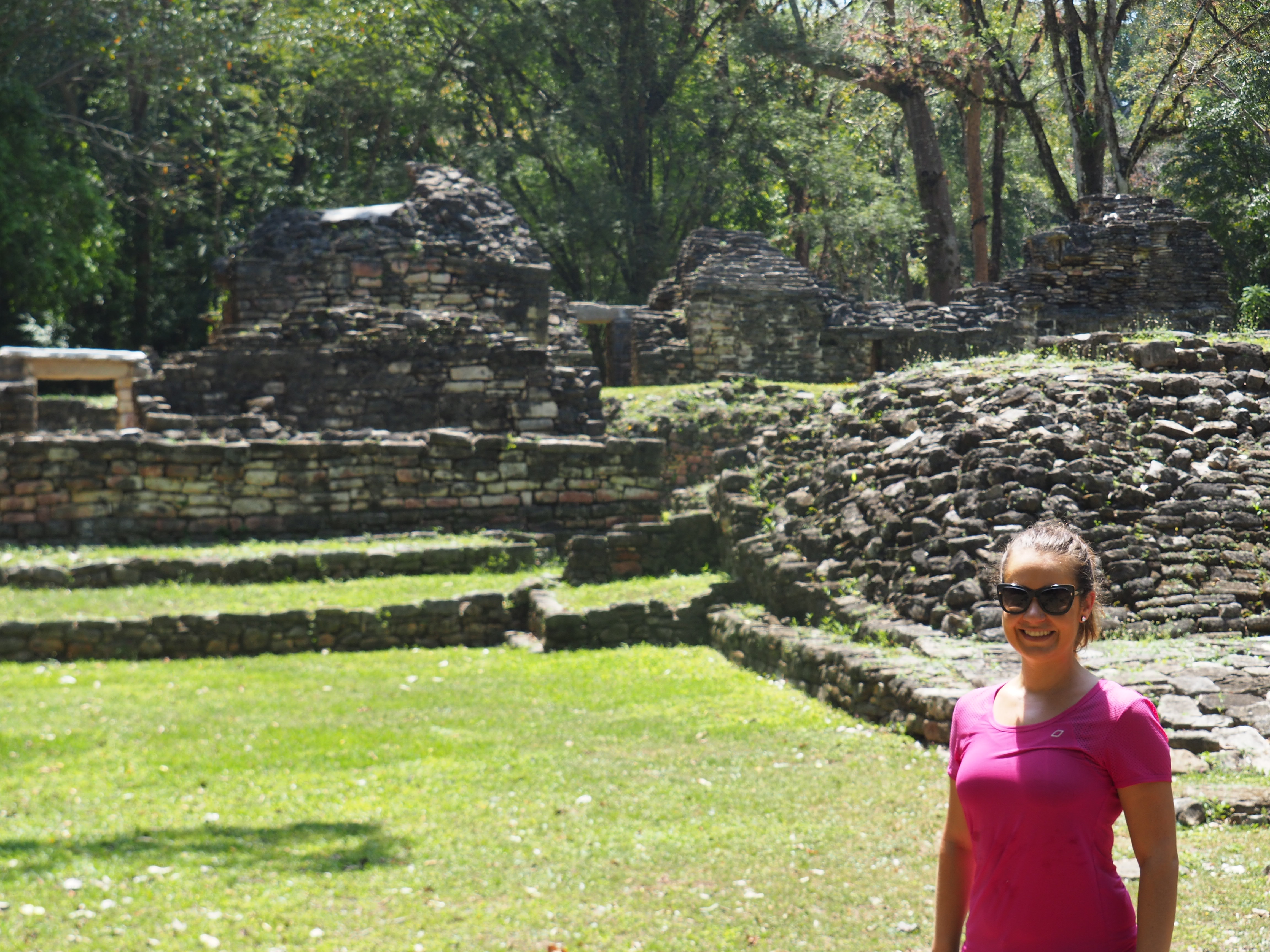
We learnt from the various signage (in English as well as Spanish, thank goodness!) that Yaxchilan is known for its extensive sculptures, including the monolithic carved stelae and narrative stone reliefs carved on lintels spanning the temple doorways.
The major groups of structures within the site are the Central Acropolis, the West Acropolis and the South Acropolis. The South Acropolis occupies the highest part of the site, but we unfortunately didn’t time our visit so well (we were given two hours to explore, and it absolutely flew by!) and didn’t manage to get to this part.
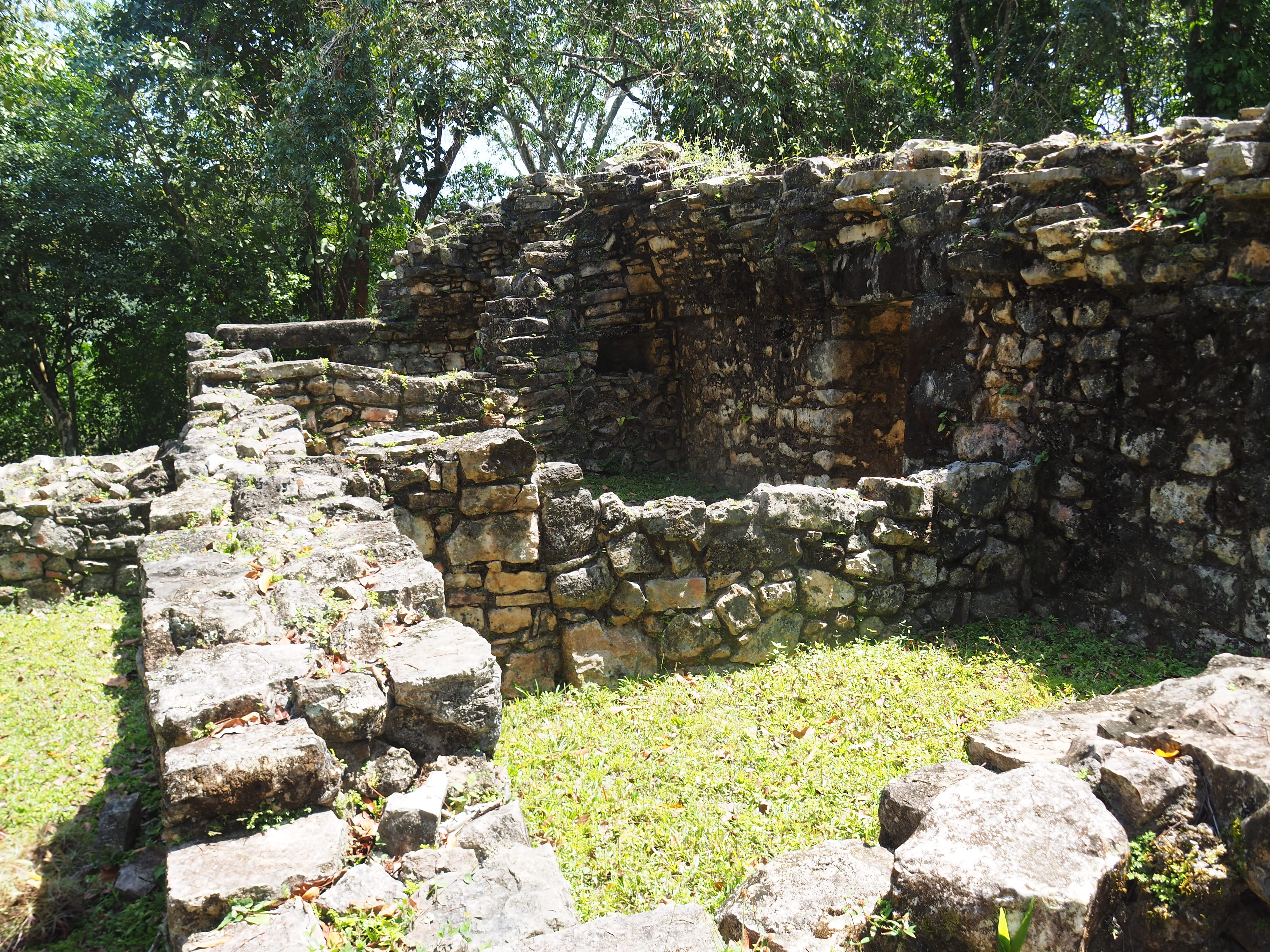
Despite being pretty ruined, archeologists have a fairly good idea of what each of the structures were used for, and who lived in them, which in itself is pretty amazing to me.
The above and below photos show some homes of the upper classes (the lower class were usually sleeping on the ground not in actual homes and usually outside of the main city), working huts and even government buildings – how on earth can they tell that!?
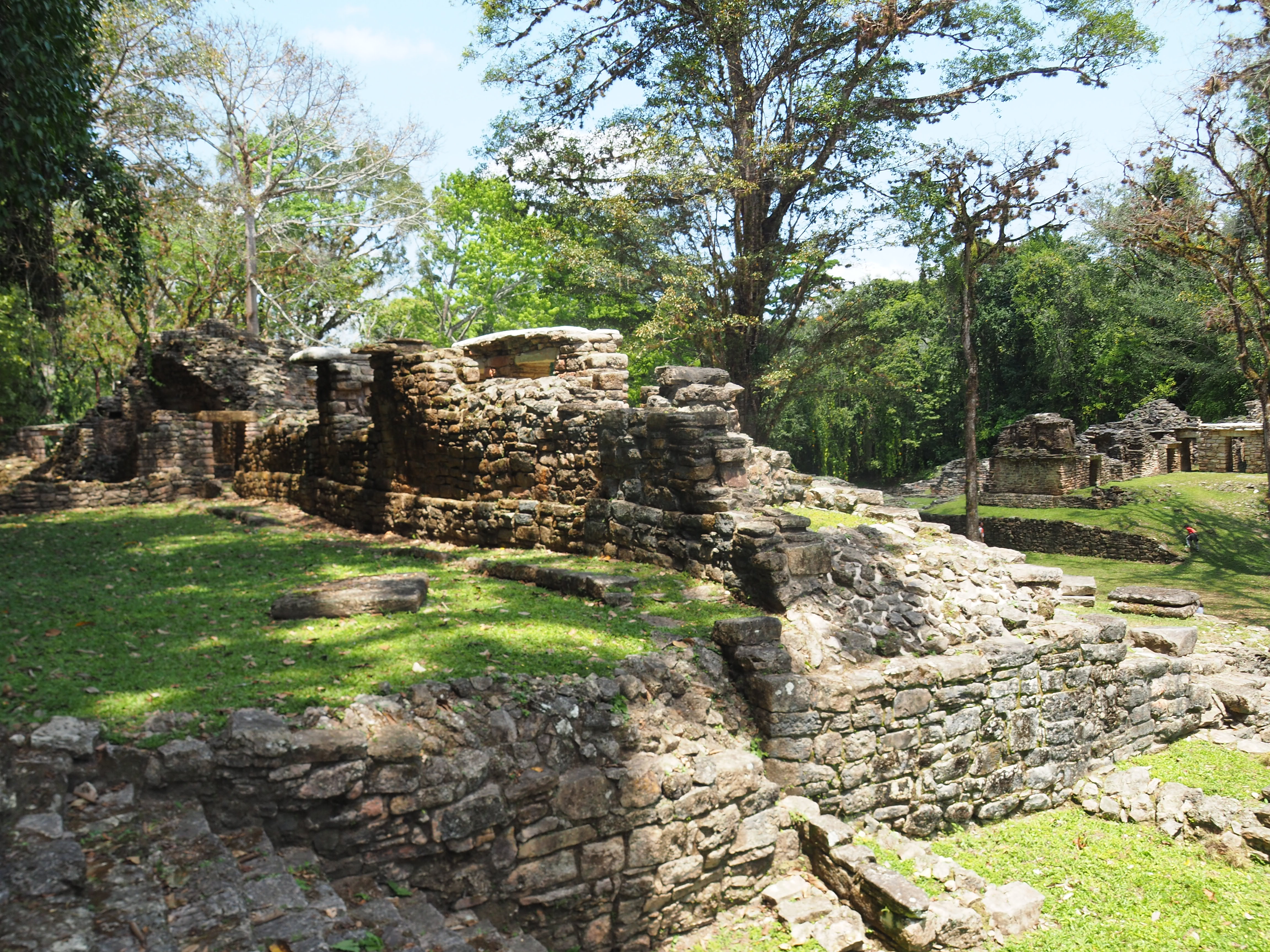
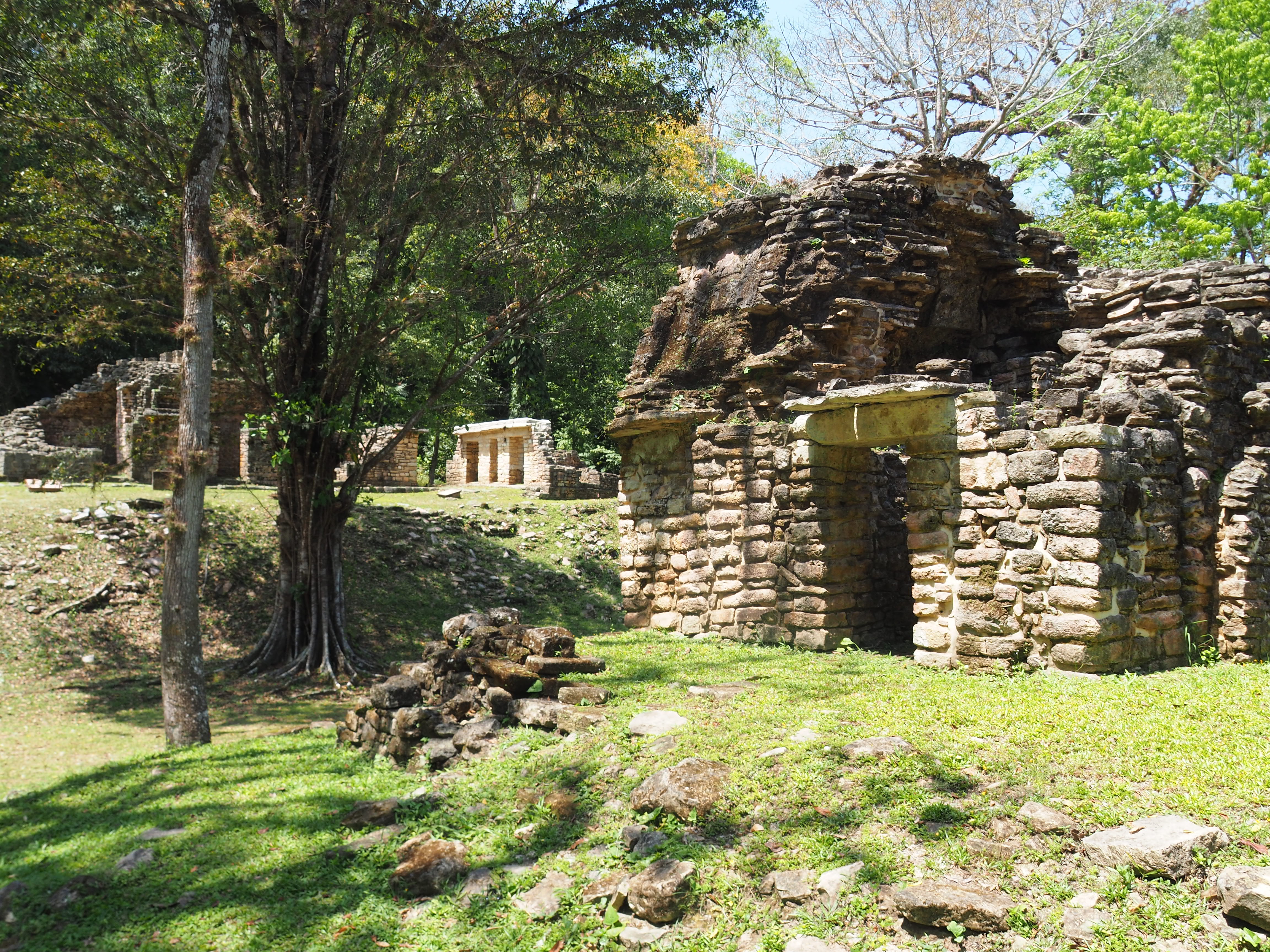
It would be remiss of me to not mention how swelteringly hot and humid this day was, the temperature was, without a word of a lie, 35 degrees celsius, and get this … 95% humidity! No wonder we both look drenched with sweat and never mind about our pretty much soaking-wet shirts!
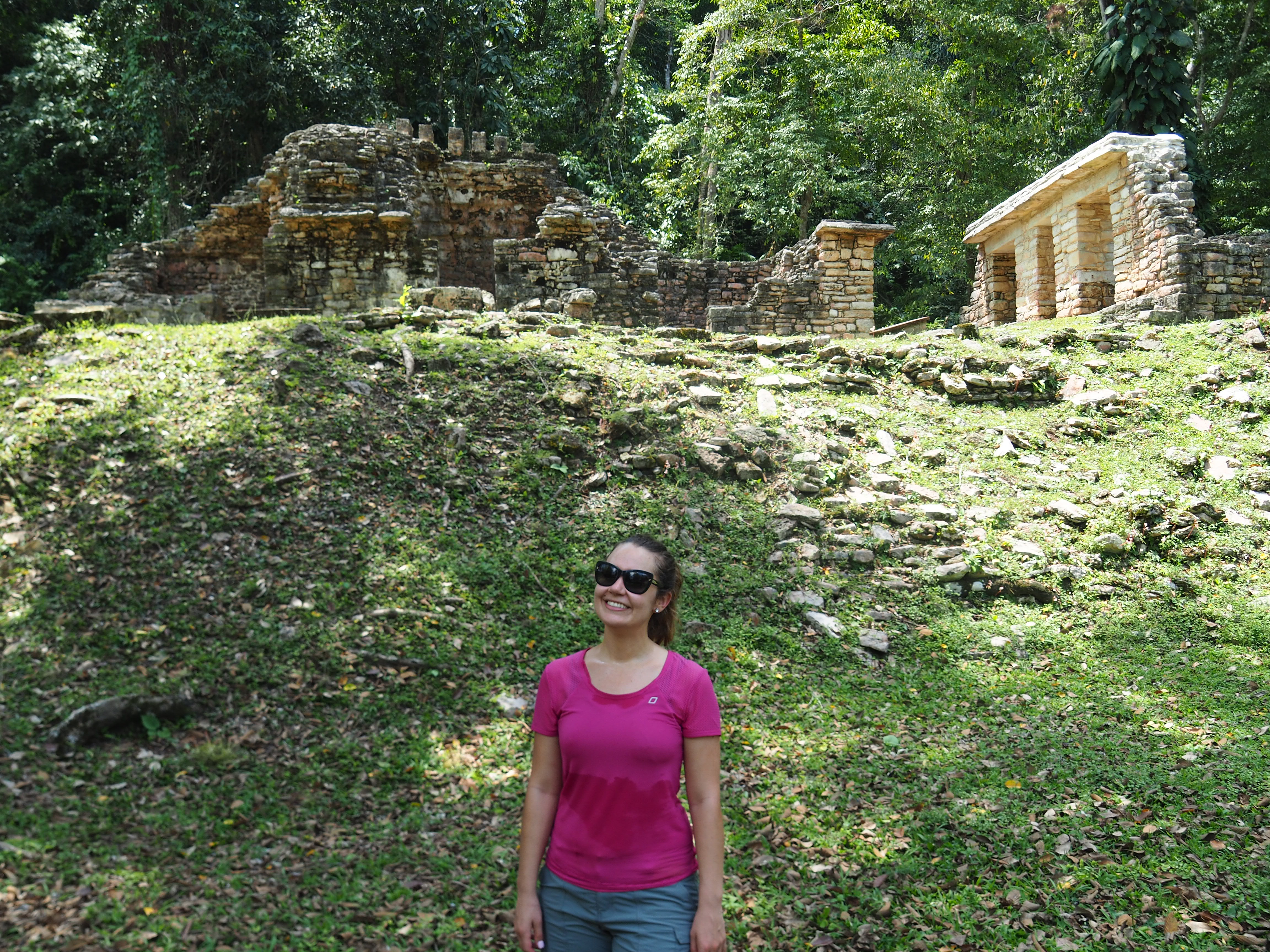
One of the things I find most fascinating is how alive the Maya culture is even today – this would be further reinforced when we visited Palenque (further down) but we learnt that a lot of Maya people still, to this day, make pilgrimages to Yaxchilan to carry out rituals to their Maya gods.
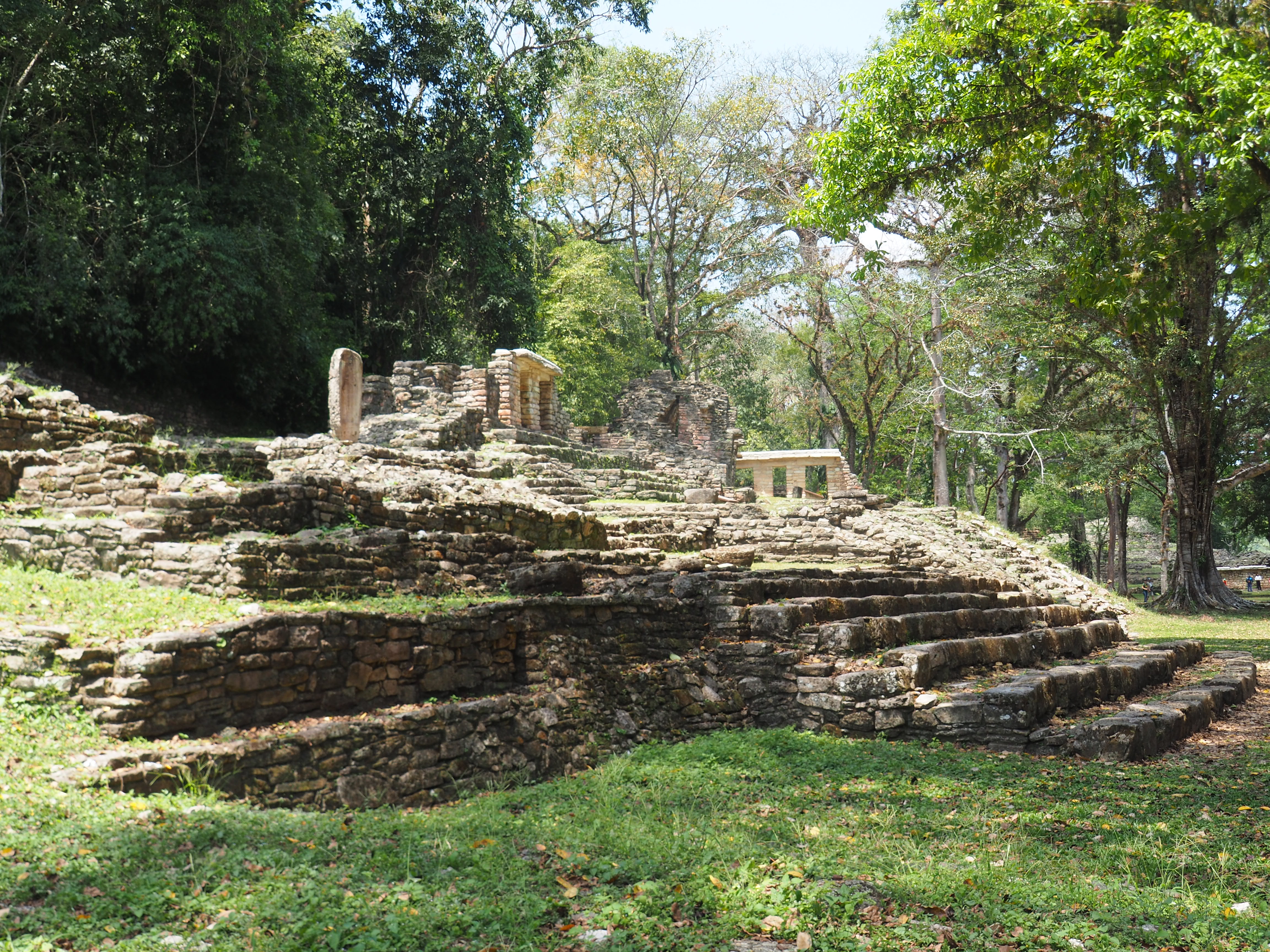
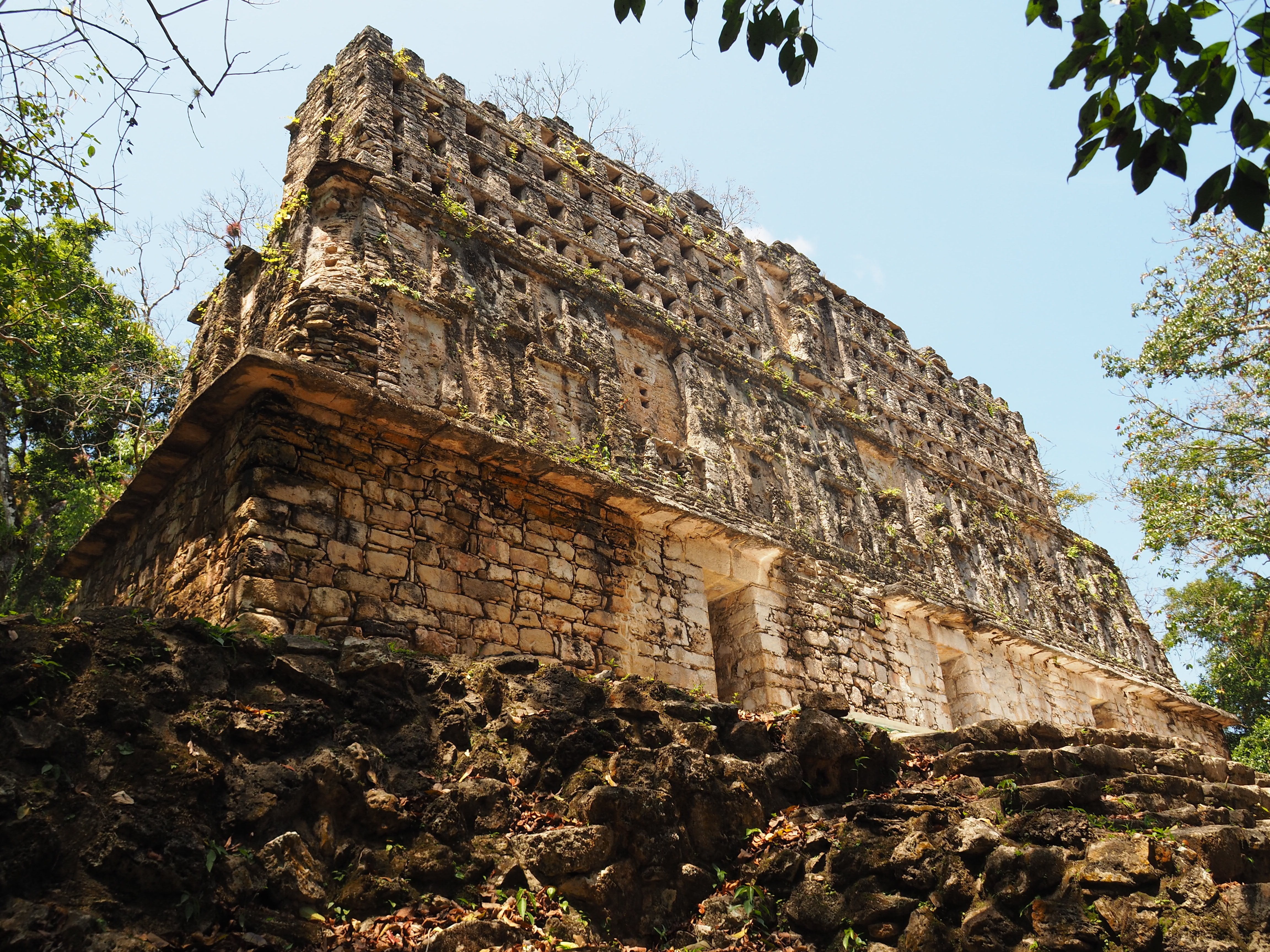
The above photo shows the mighty imposing temple at the top of about one hundred really steep steps, and is in the Central Acropolis. From here there is a fantastic view over the bottom half of the site, but I tell you what, the steep steps certainly take it out of you, and give the old calves a good workout!
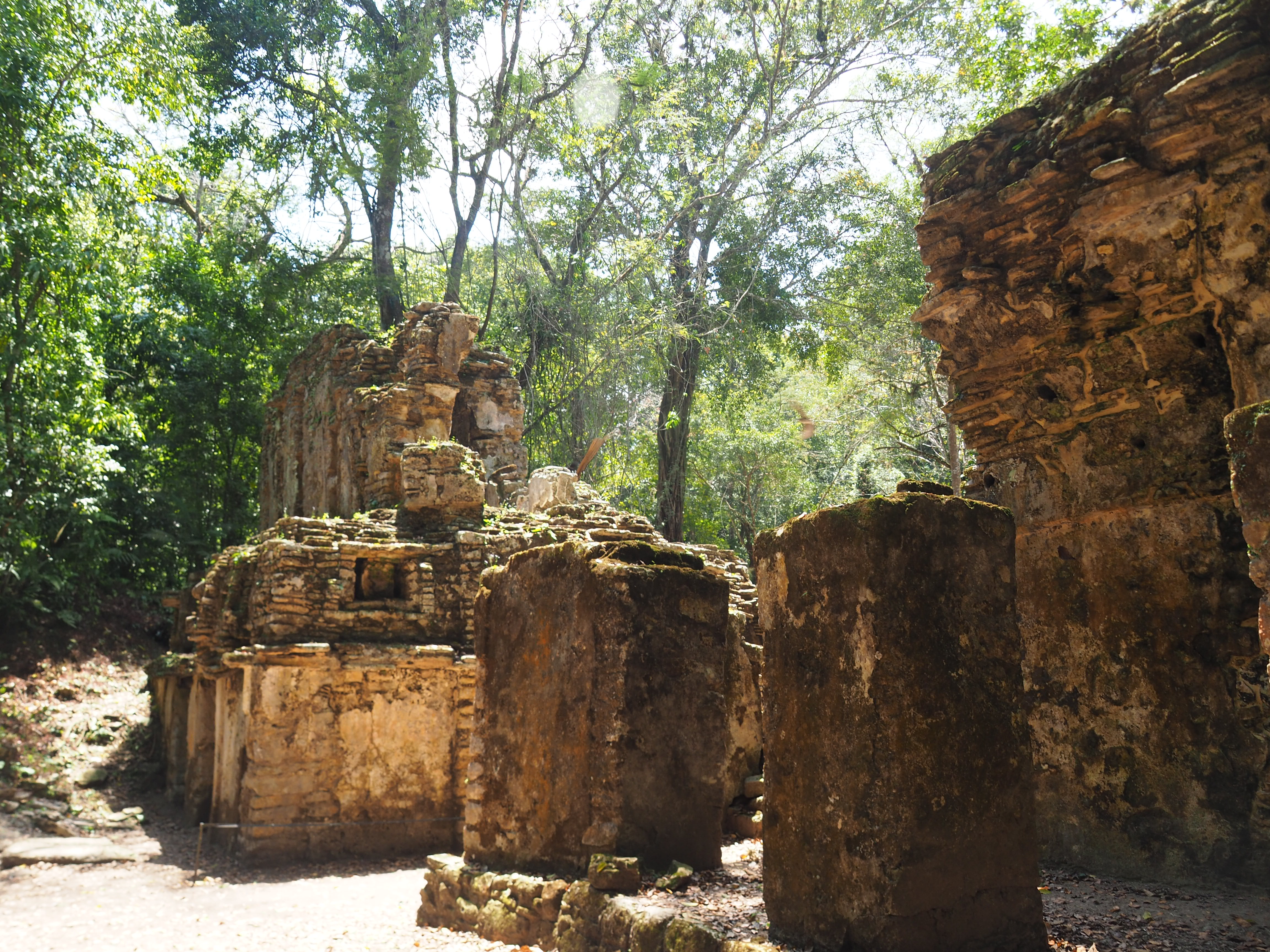
The below temple was one we found after going rogue up a jungle track that took us about twenty minutes hard core hiking uphill to reach, but the view of it shining in the mid morning sun, with the purple flowers all around, took our breath away.
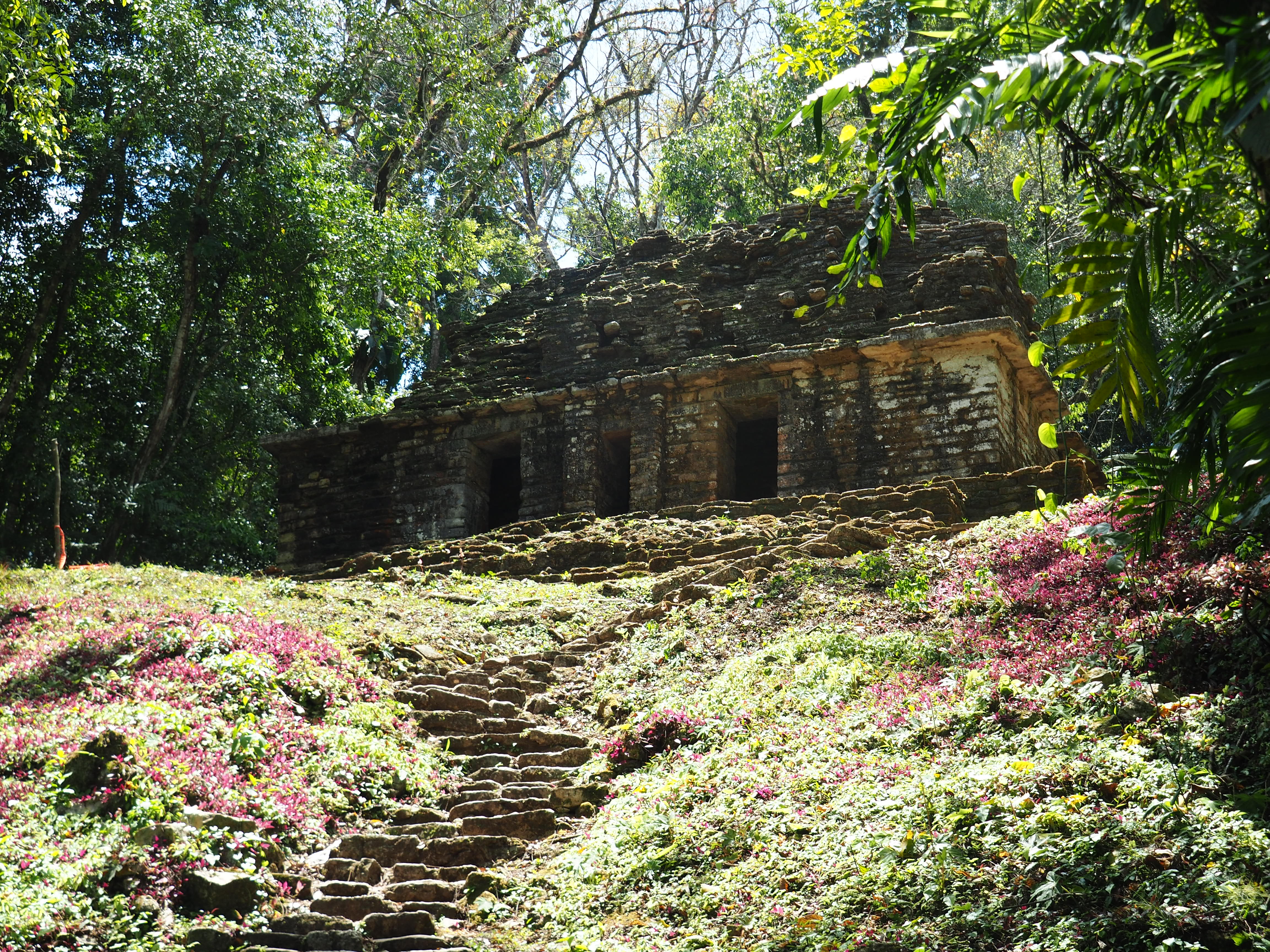
Finally, when our two hours was up, it was back on the canoe and we cruised the river back to where we started, jumped in our minivan, and pulled into a nearby small restaurant where we had lunch. Nothing special, but deeply satisfying after a hard, hot and humid morning!
Then it was back in the van for another half hour until we reached Bonampak…
Bonampak
Our guide deposited us outside the entry point to the Bonampack ruins, and similar to Yaxchilan with the canoes, the indigenous people took us the rest of the way to the ruins in a non-airconditioned, beat up car with cracked windows and a smashed side mirror, kind of sad they can’t have anything safer, or more comfortable!
As we approached through yet another jungle path, we soon saw the looming main terrace of Bonampak waiting for us, imposingly situated up the side of a large hill, and overlooking the rest of the valley.
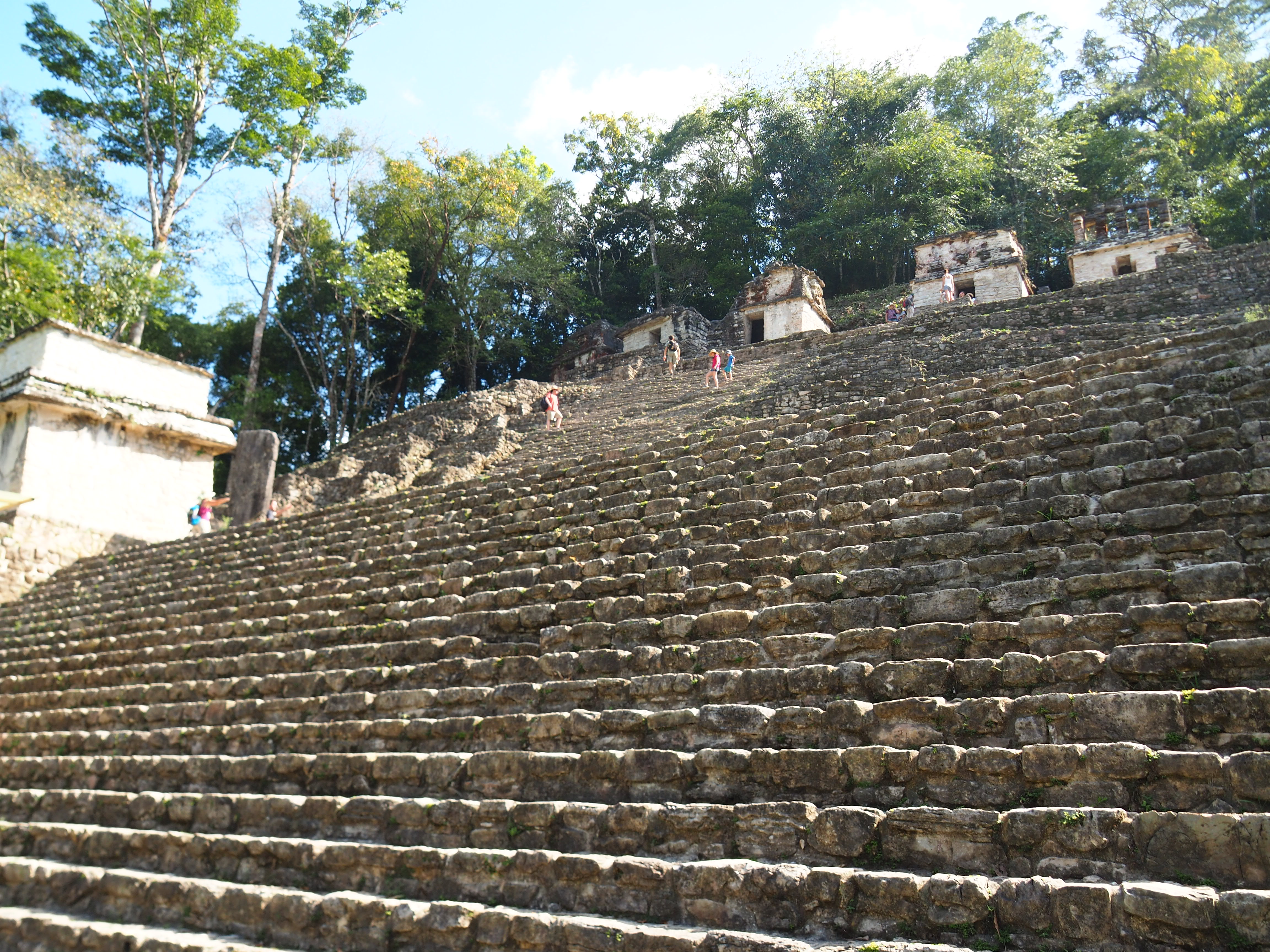
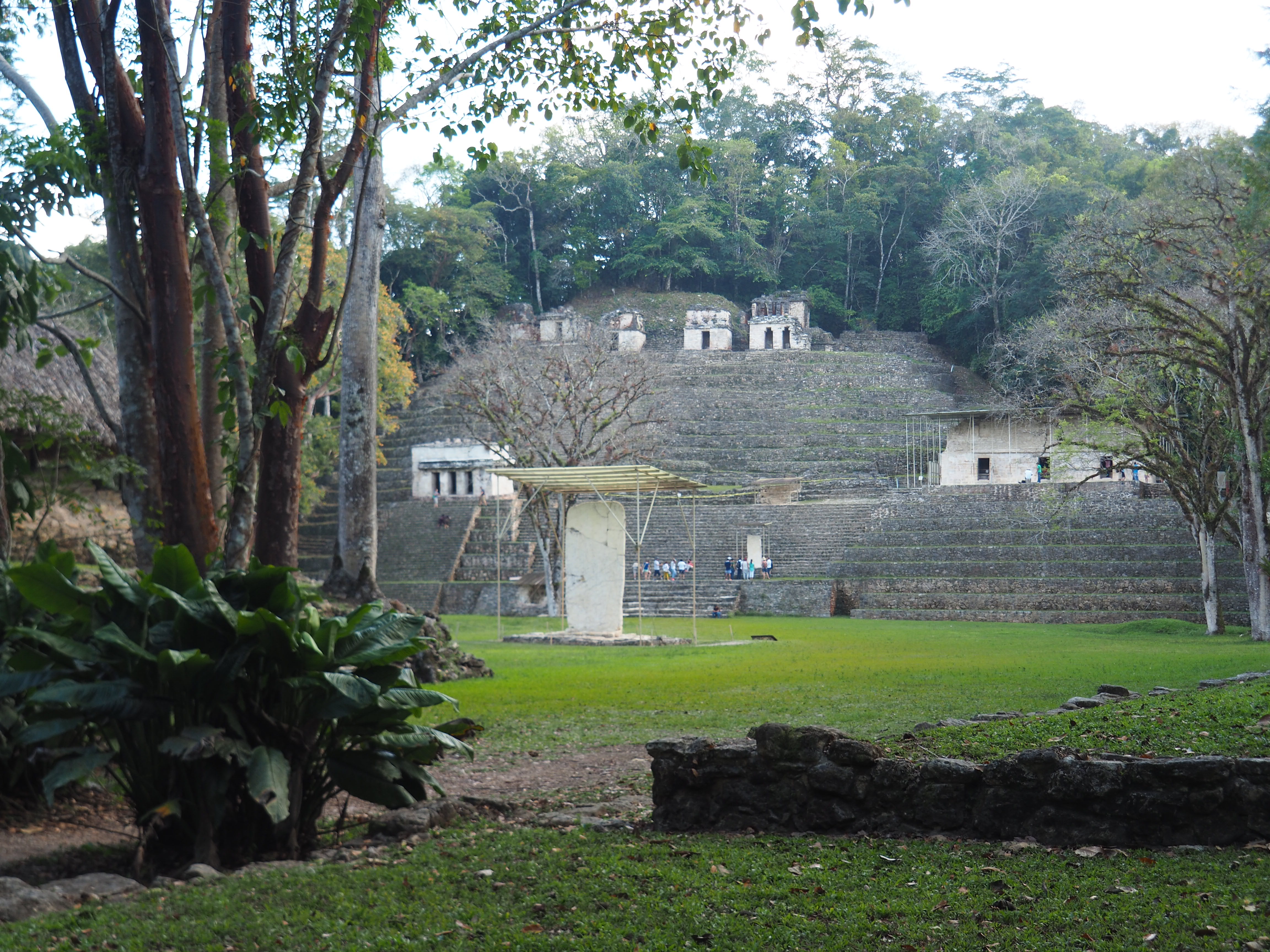
Despite not being anywhere near as large or impressive as Yaxchilan (Bonampak actually was a dependent of Yaxchilan), Bonampak is renowned for having probably the most well preserved Mayan murals. These murals were of key importance in understanding the Maya people, as they debunked early assumptions that they were a peaceful culture of mystics as the murals clearly depict war and human sacrifice… the Mayas loved them some human sacrifice!
Unfortunately you were not allowed to take photos of the murals to preserve their integrity but the climb up the huge terrace was another epic leg workout, and gave us some spectacular views over the surrounding jungle from the top.
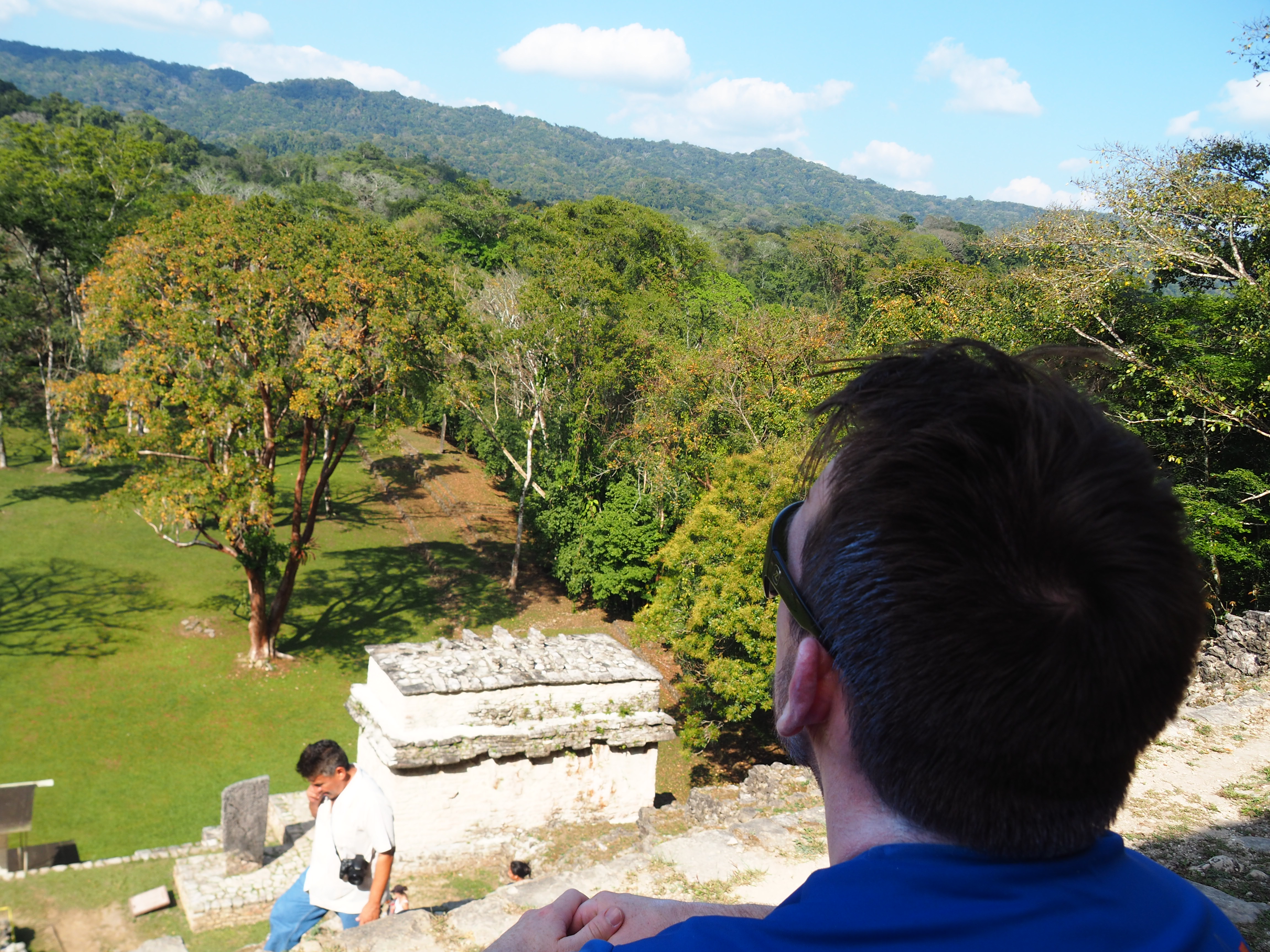
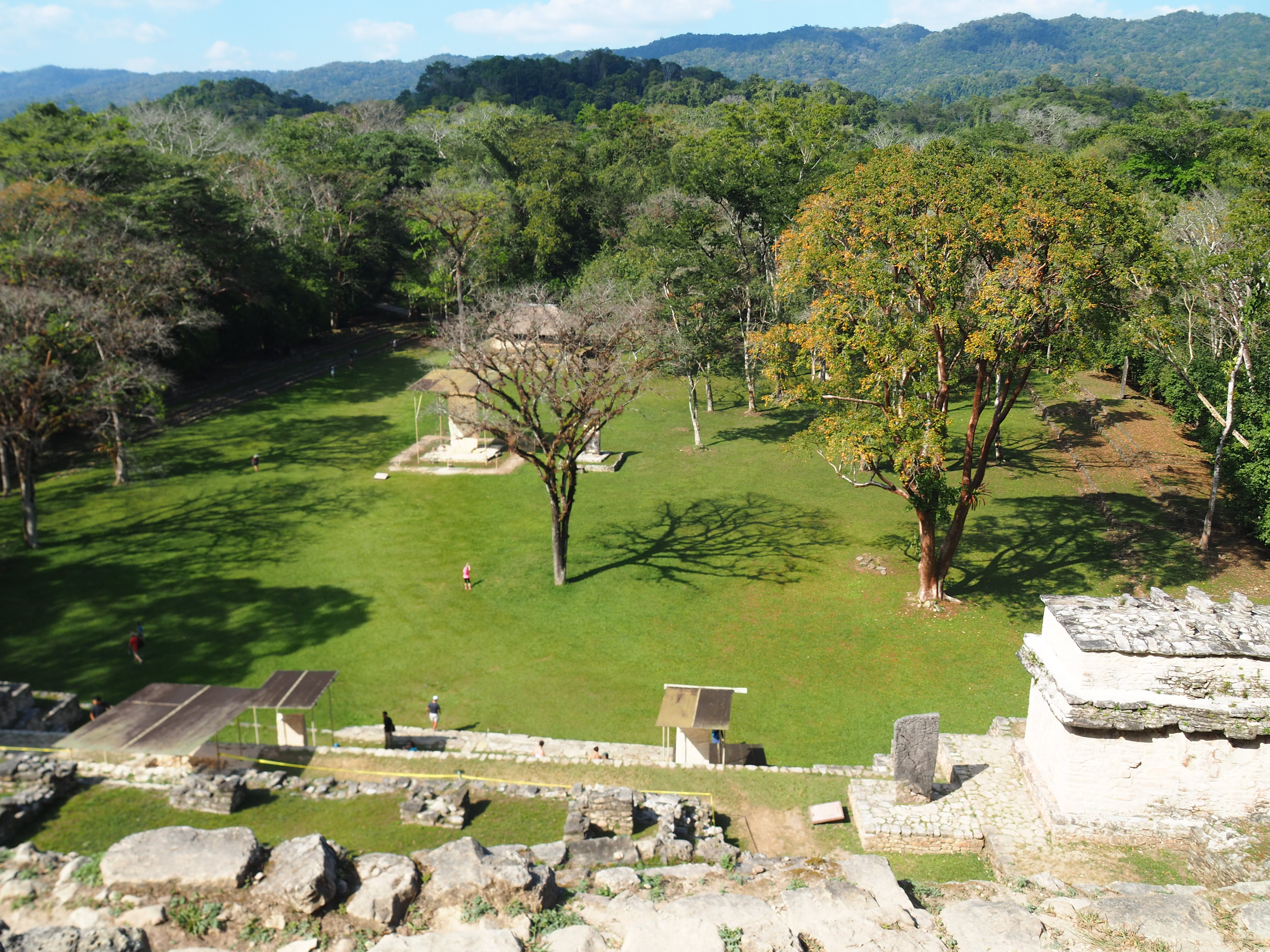
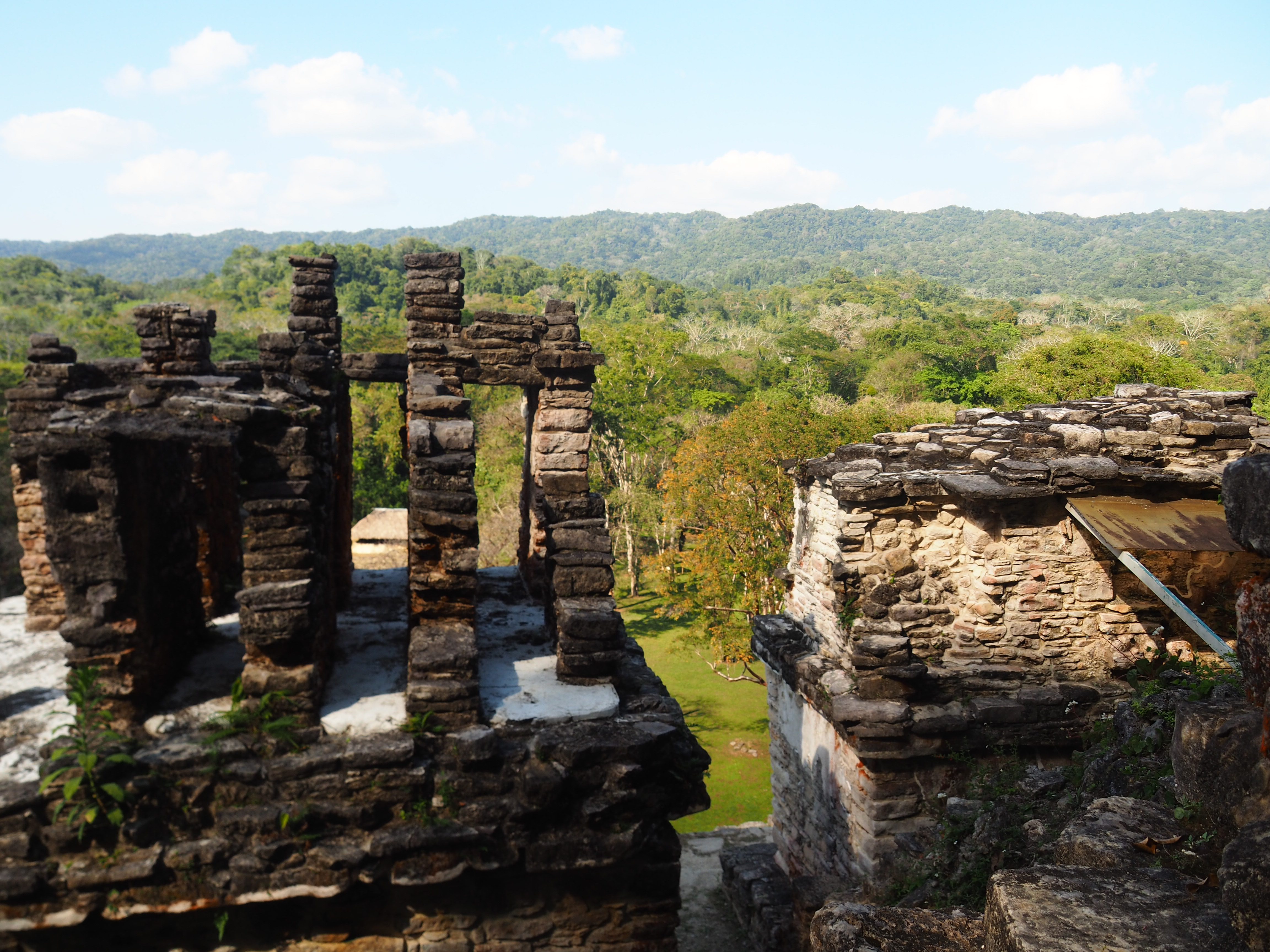
I particularly love the below pic of a temple right at the top of the terrace, with the jungle looming behind it and the colours so dramatic!
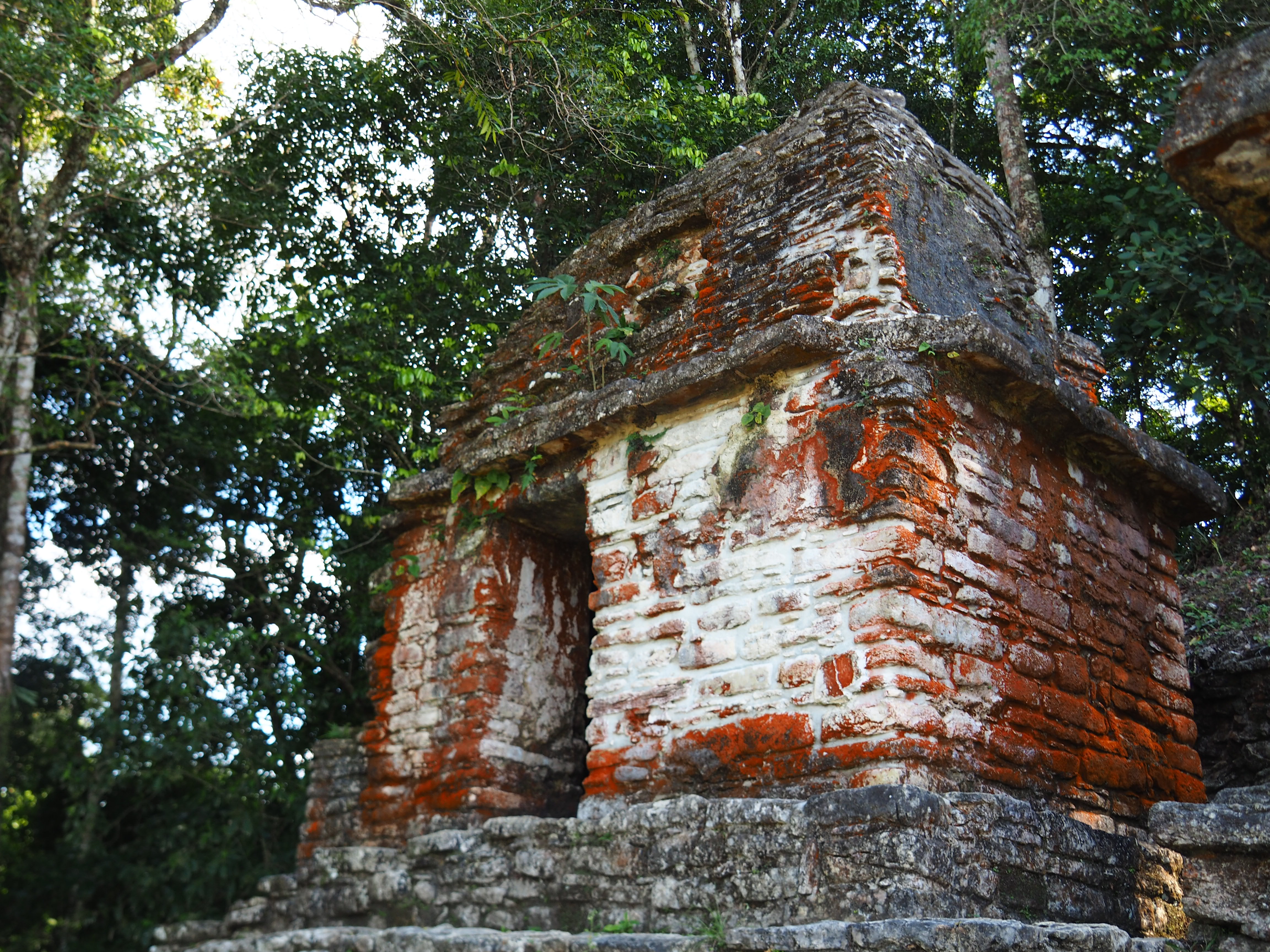
After an hour at Bonampak, it was time to head back for Palenque town, and after such an intense day, the majority of our tour fell asleep on the 2.5 hour journey back. Dave and I were kept wide awake but the constant slowing to zero to cross the HUNDREDS of very amateurly-made speed humps every time we approached, went through, or left a town, as well as the traditional towns and townsfolk we were passing through.
It did sadden me to see how many of these people live in poverty, I think I read somewhere that almost 50% of adults in this region are illiterate, and we saw so many very poor families. Not a frown to be seen though, their smiles lit up as we drove past and just like kids anywhere, the Chiapas kids would wave at us and giggle and laugh if we waved back.
We finally arrived back to the town around 7pm that night, and being pretty much exhausted, we were keen to just kick around the hotel, so room service it was…. big mistake as you read earlier!
Palenque
Following a day off in-between ruin hunting to recover from my upset tummy, we had to decide whether to see the beautiful Aqua Azul and Misol-Ha waterfalls or the primary site of the region – the Palenque ruins. This was actually a tough one as the whole reason for coming to Chiapas at all, was to see the Palenque ruins, but the weather was so hot and humid (again!) that the idea of swimming in beautiful waterfalls was very, very appealing!
In the end, the fact we would be swimming in cenotes in the Yucatan shortly, and the notion that we (ok, I) really could not handle going to Palenque and not seeing the Palenque ruins, meant Palenque won. And we both were really, really glad that we went – these were a definite highlight!
Rather than forking out big money (well not big money, but relatively speaking – our previous day trip cost about AU$100 for both of us which is a lot when in Mexico), we decided to do the Palenque trip ourselves so caught a local collectivo which cost us 40pesos (about AU$3) to get to the national park entrance.
We paid our entry fees and started chatting to a local Maya guy called Nacho who, looking back, played us for the tourists we are and impressed us with both his english and his clear passion for Mayan, particularly Palenque, history and customs.
Here is a lovely photo of Nacho’s back (i unfortunately didn’t get a photo of his face haha)
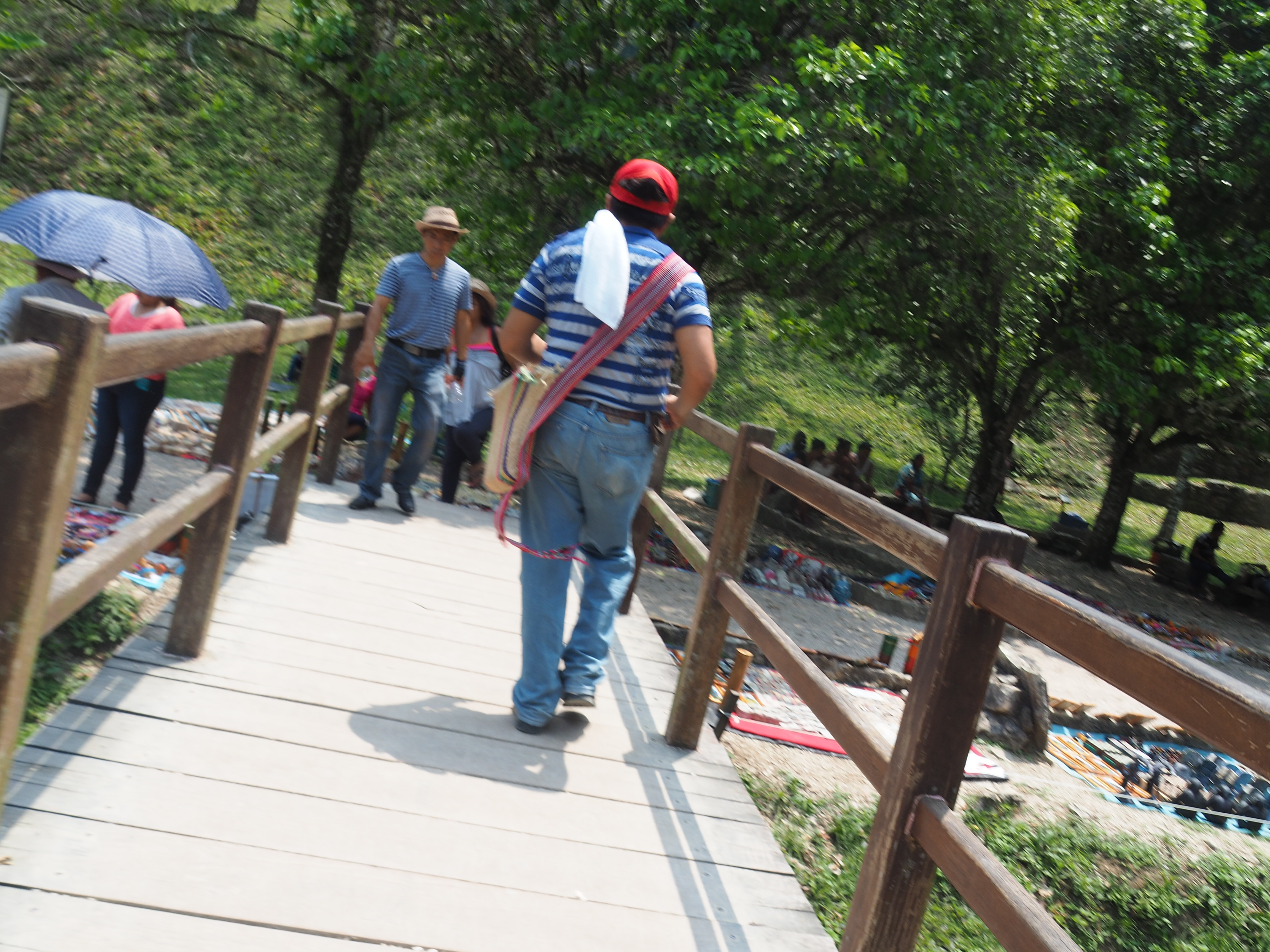
Before we knew what we were doing, we had agreed to pay him about AU$50 for a three hour private tour of the ruins, as well as a jungle trek where we would see otherwise inaccessible ruins and waterfalls. So we basically didn’t save anything, but we DID get a completely private, customised tour of Palenque with a very knowledgeable, local Mayan expert – fantastic outcome I say!
There were so much fascinating thing, history and stories that Nacho told us over the following three hours, way too many for me to even try and cover a tenth of in this blog, but I’ll share some of what I found most interesting amongst the photos of the ruins themselves.
The below photo was our first opening glimpse of Palenque and it was pretty awe-inspiring.
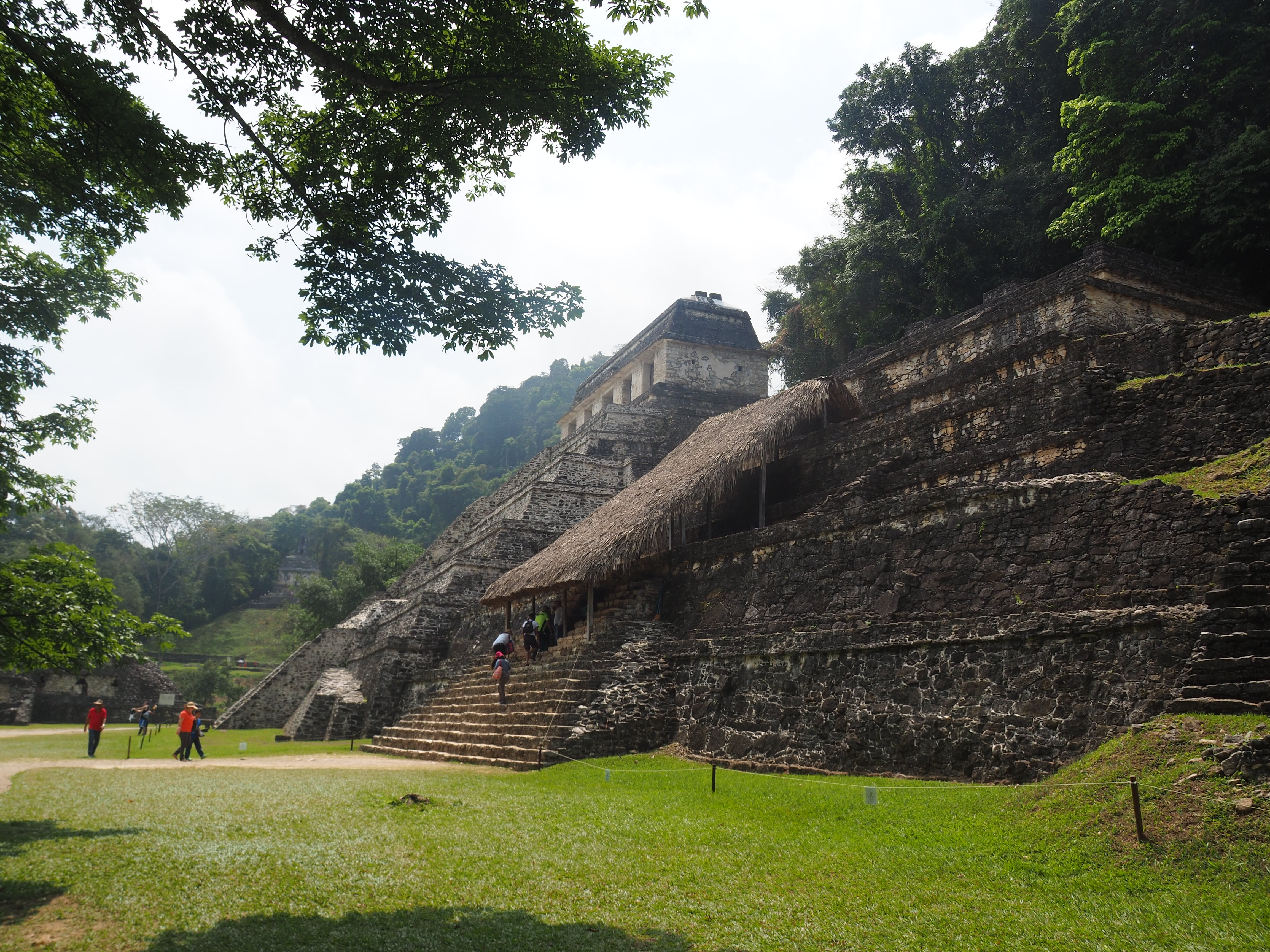
Firstly, Nacho started off by sharing some background on the Maya people – the fact that what he referred to as the ‘high society’ of the Mayans would live inside the city (now ruined, obviously) in the buildings that we could see the remains of, whilst the working class would live outside of the centro and live a pretty dismal life – not that they knew it!
They provided everything for the high society dwellers – from the food, ranging from turkeys to corn, to free labour, to the willing human sacrifices (who were often buried inside the building walls they were building) to ensure the gods were happy with them.
And how did they do this so willingly? We asked the same thing – “it was the greatest honour to be a sacrifice for the gods! Just think, your children and grandchildren would be able to tell how their ancestor was a part of the great palenque temple!” Yep oooookaaaay.
Next photo is one of the main temples, standing in a prime position right next to the palace of the ruling family.
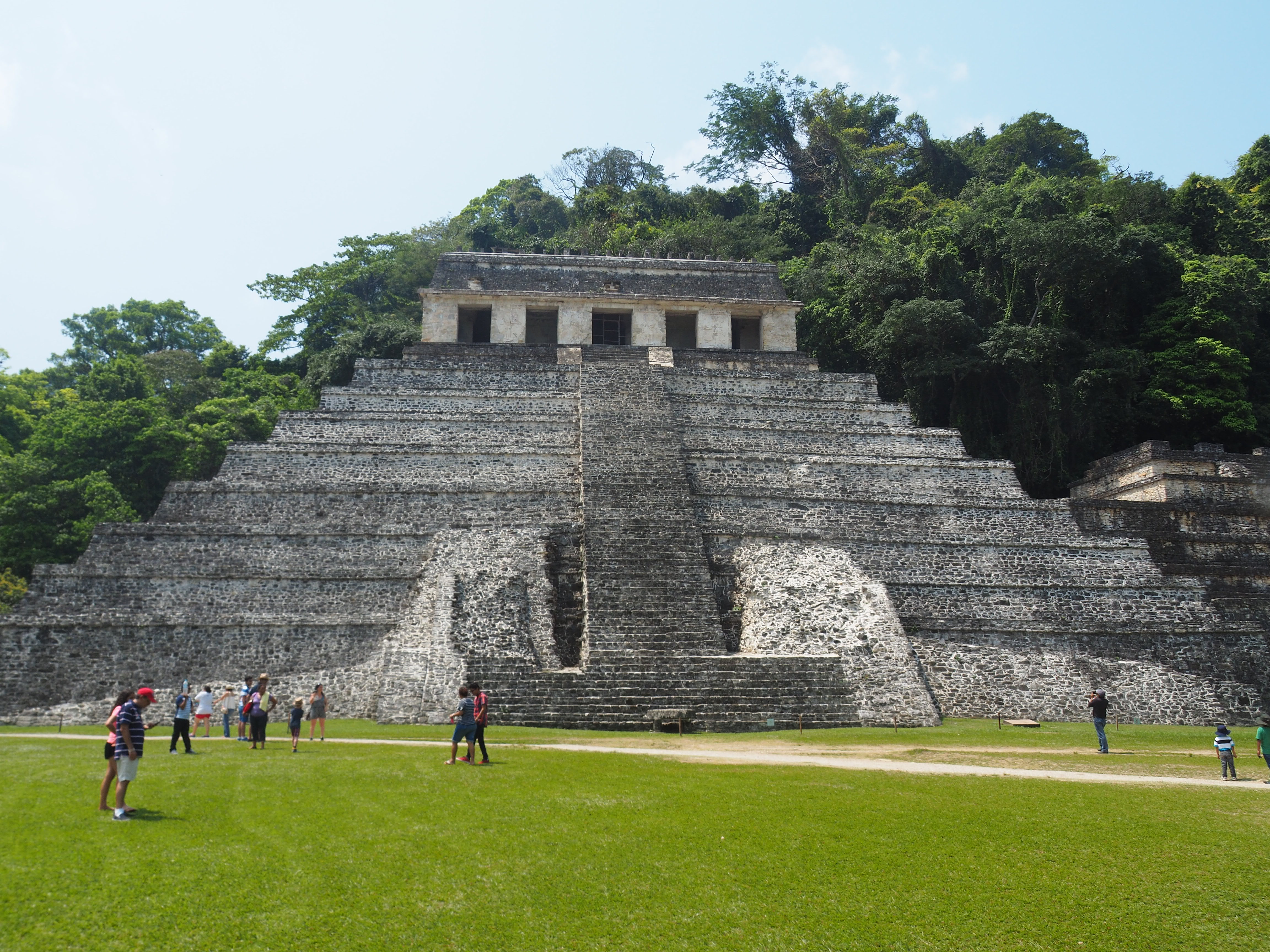
Secondly, the Mayans were cannibals. Totes true. Nacho told us that the higher society would eat human sacrifices as a way to a) keep the lower class a little bit scared (they may have been willing sacrifices, but still, seeing your leaders eating your kin cannot have been too great); and also to get the extra protein that made them the stronger, taller, more muscular and all round more aggressive (read: superior) people. CRAZY.
The below photos are of the ruling family’s main home – the grass you can see was actually a pool filled with water and used as a ‘mirror to the skies’ where astronomers would look into this pool, and chart the planets and stars. Yep, they had astronomers, and damn good ones apparently!
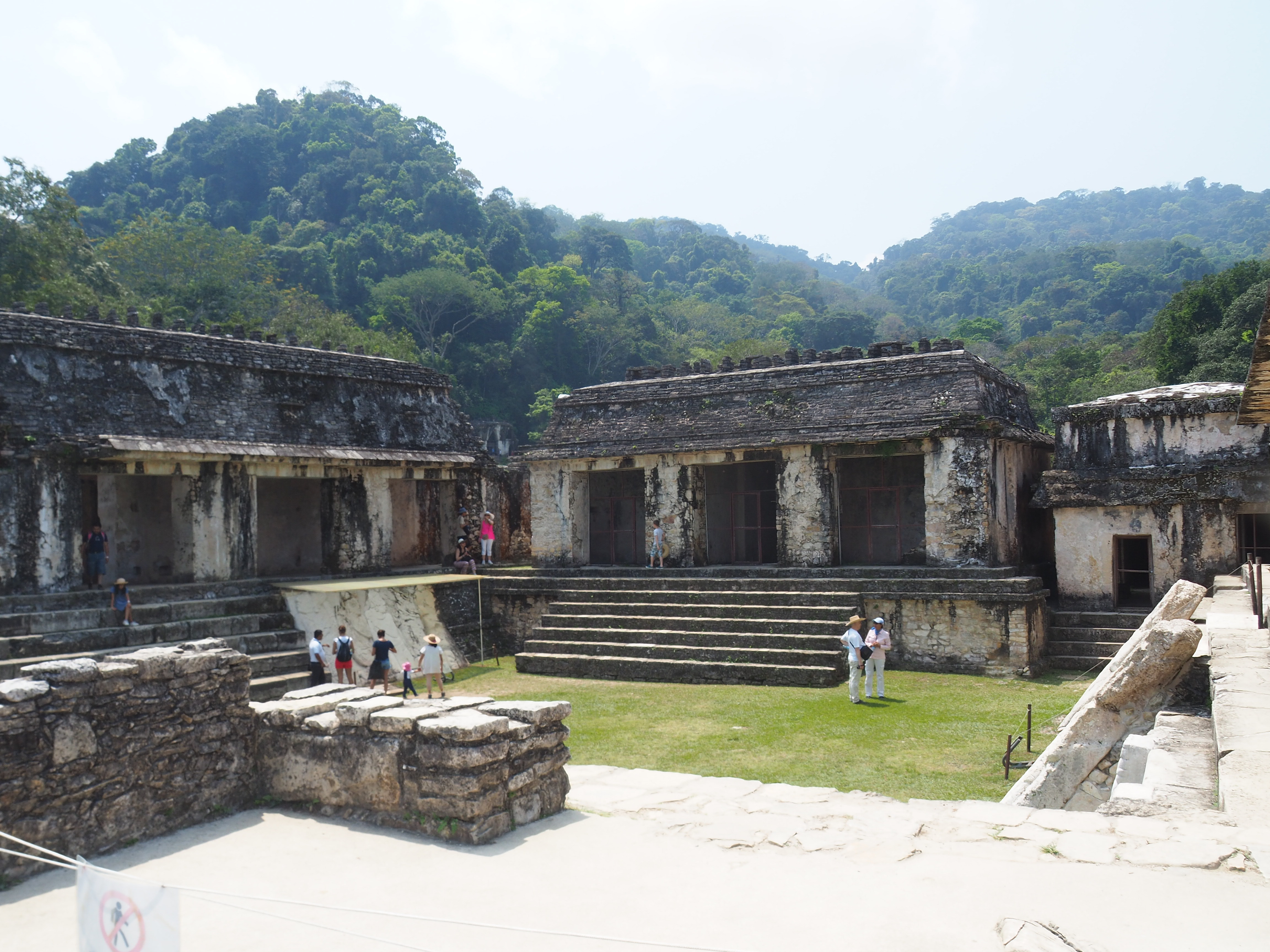
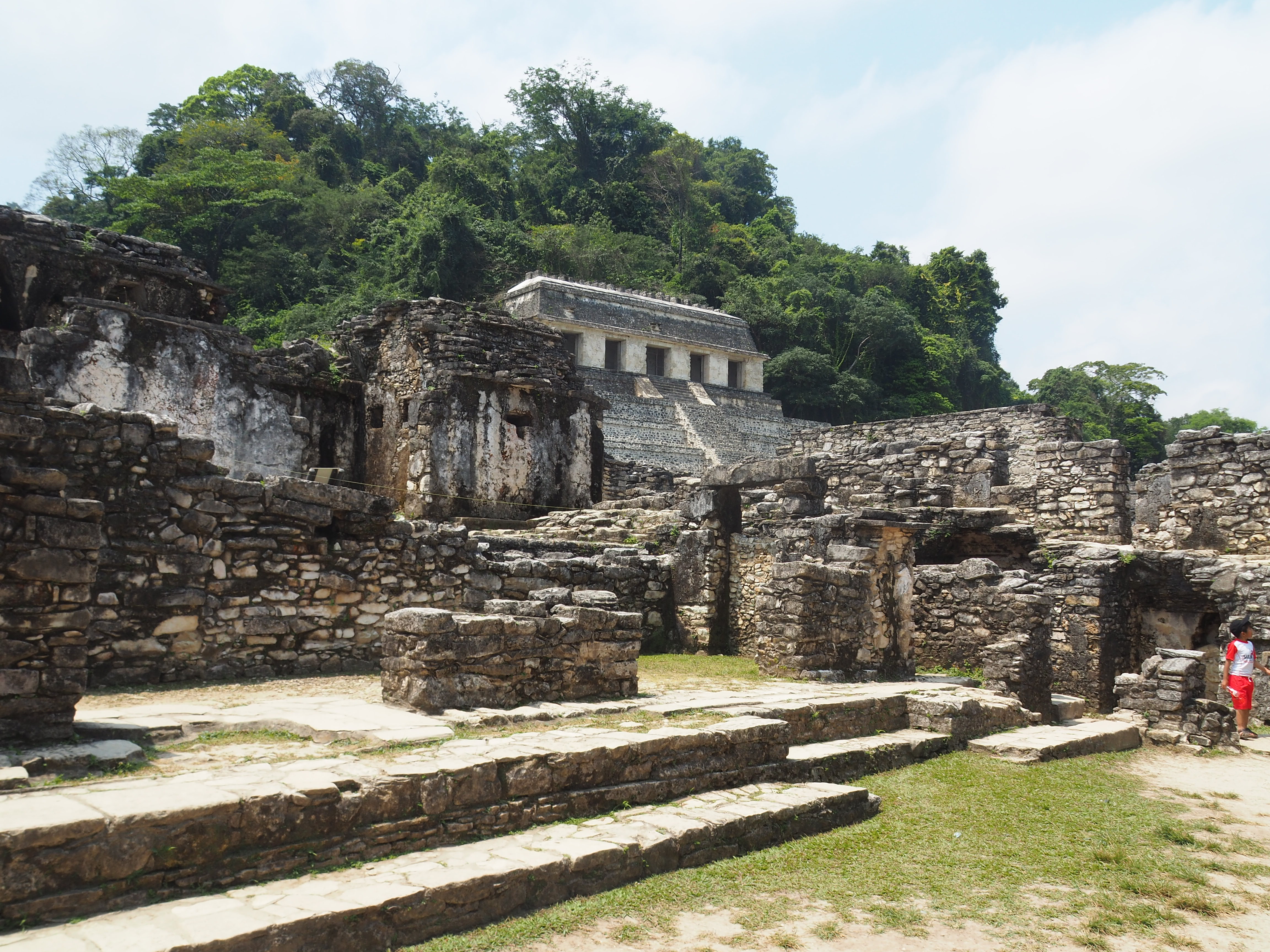
Speaking of the ruling family, they cleverly used the sun’s trajectory as a way to reinforce to the higher society as well as the masses that they, and their ancestors, were the ‘chosen ones’.
They (like many other sun-worshipping nations) did this by building their temples in such a way that certain windows would allow the sun’s light to shine directly on a particular spot at certain times of the year – the family would then choose the summer or winter equinox as the perfect time to ‘unveil’ their new child, thereby ensuring the rays of sun would hit perfectly on the heir. It must have been pretty impressive as we stood in both places and the sun’s light would have been literally quite blinding when it hit the spots.
The next photo is a view from the top of the palace to (what remains of other) homes below.
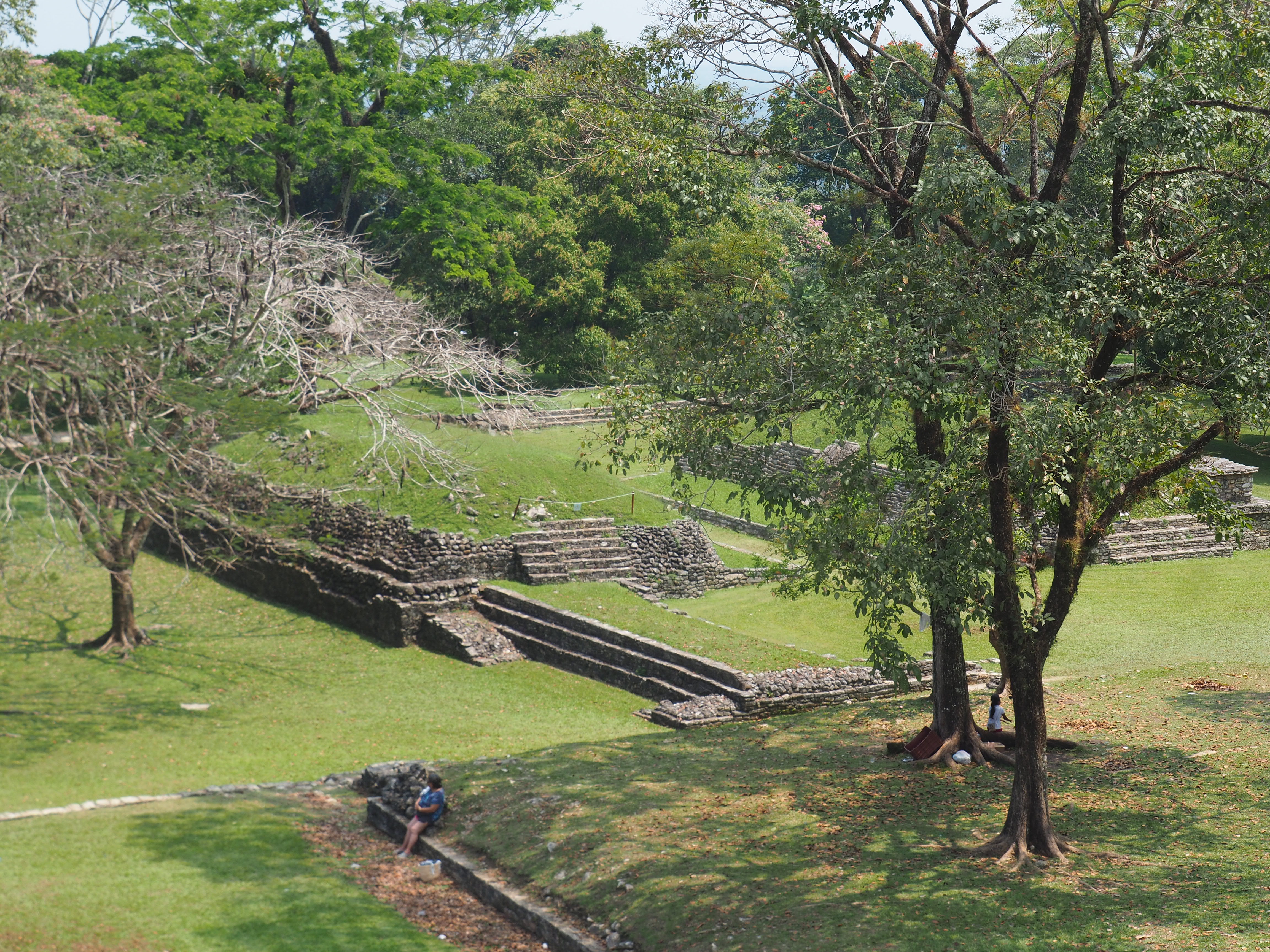
Despite the ruling family home being HUGE, there was only eight people living inside – the ruler himself, his parents, his offspring and a couple of key servants.
This leads to another of the interesting points – the Maya higher society made a point of keeping their families small, so they could concentrate on reaching higher spiritual dimensions through meditation and hallucinogenic means, whilst the working class were encouraged to procreate as much as possible, plus the men were strongly encouraged to take numerous wives.
Why? Because the conniving, clever Maya figured that the busier the men are with all their wives and children (and keeping them all in line), combined with the non-stop farming, labouring and sacrificing yourself business, they would have no time or energy left to ’cause trouble’.
The following photo is a religious temple taken from the ground – this temple easily oversaw the palace as well as the majority of the higher society inner buildings.
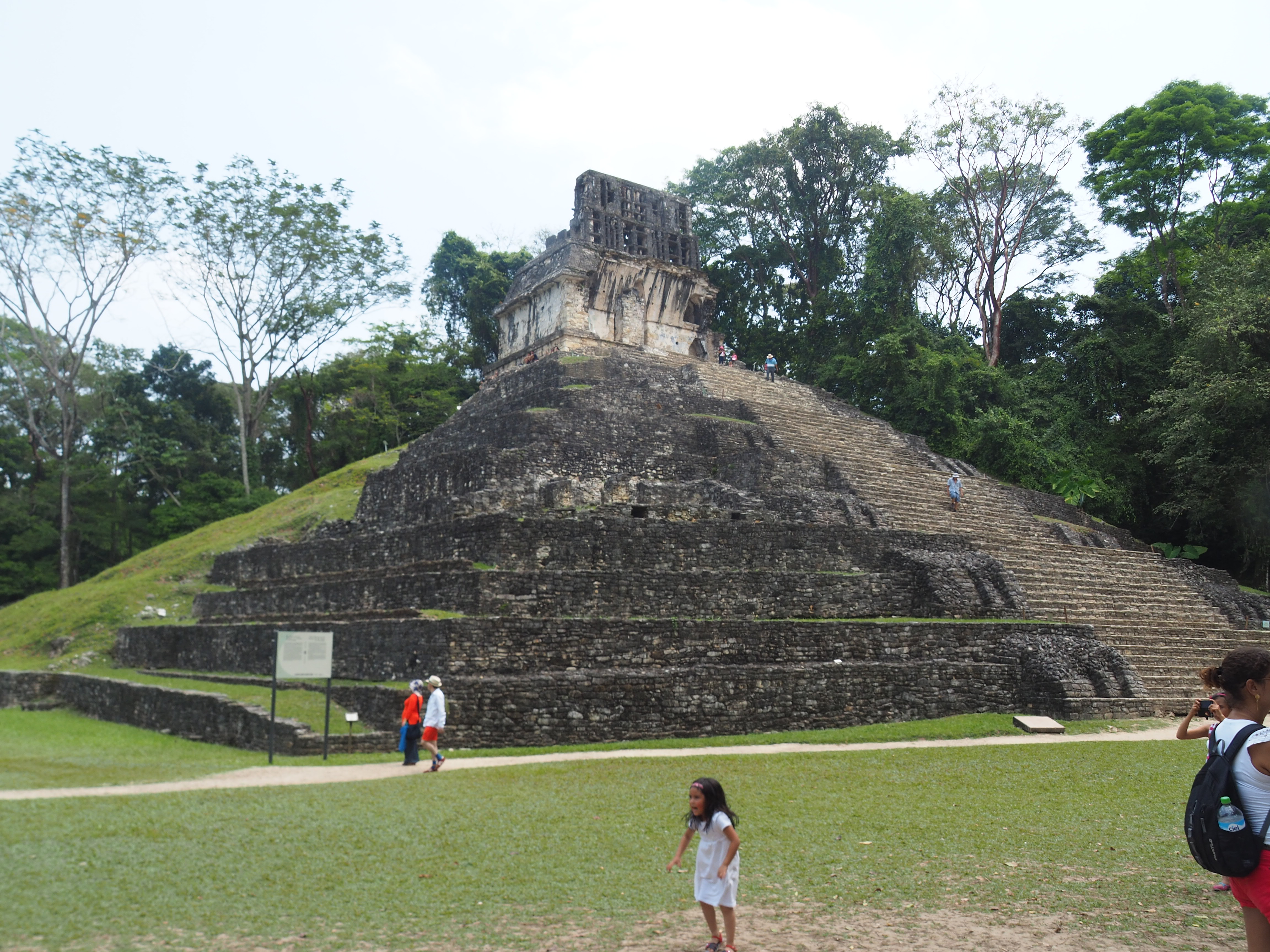
It was a pretty spectactular view from the top (and yes, you know it, the old legs were cramping after this one too!).
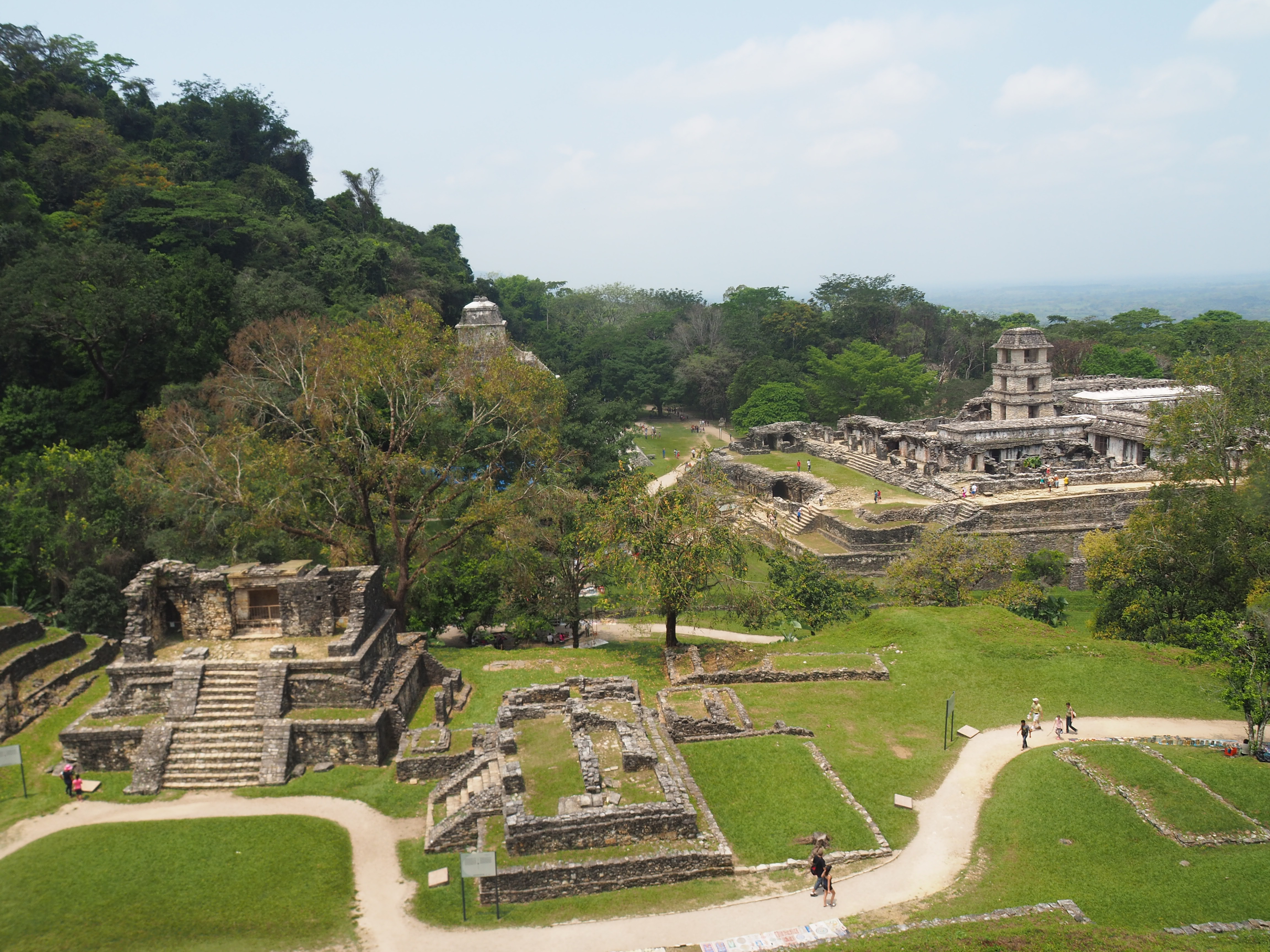
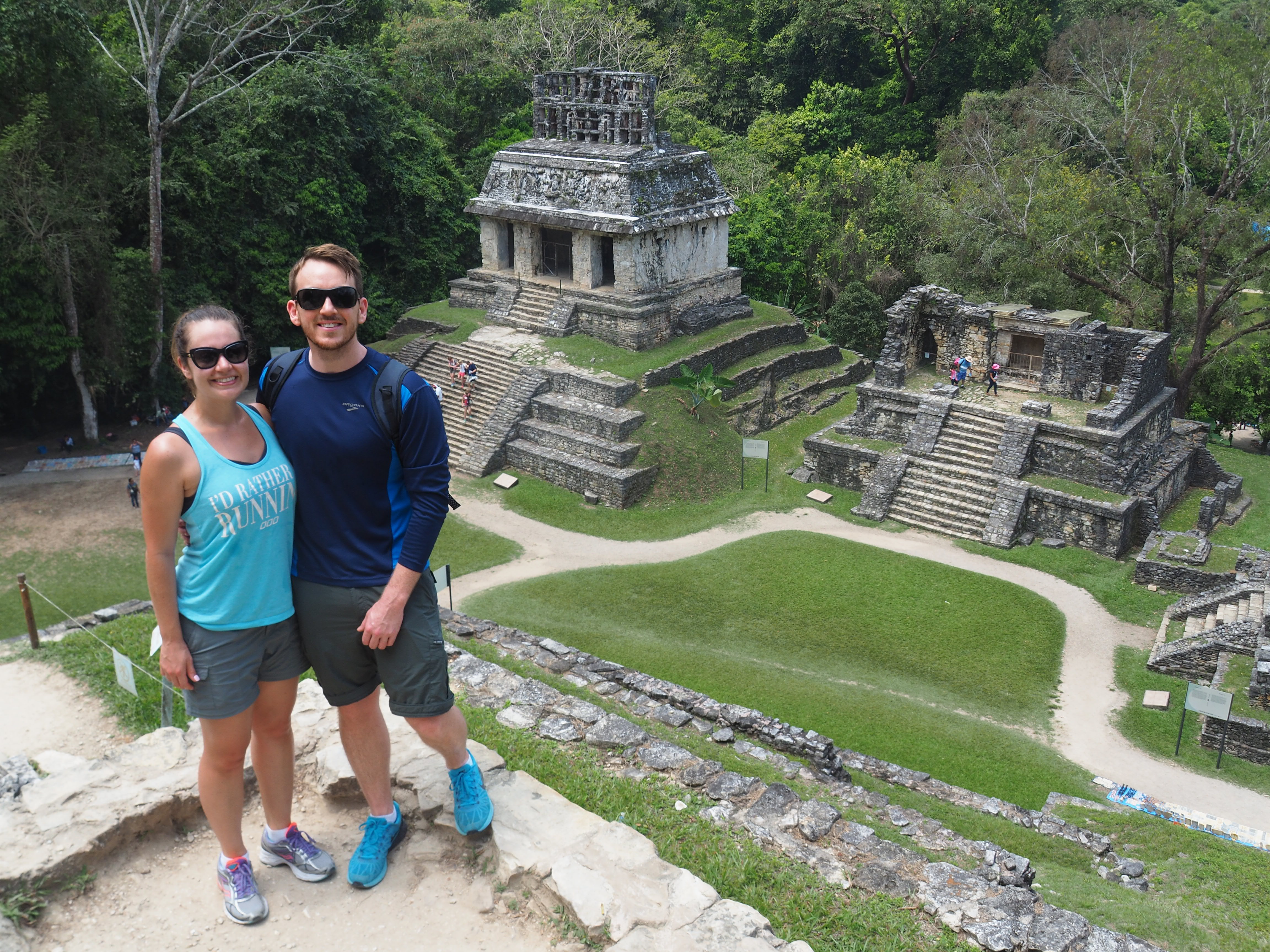
Now, a quick fact check – the Palenque ruins date from approximately 226BC to about AD 799. After its decline, Palenque was absorbed back into the surrounding jungle of cedar, mahogany, and sapodilla trees, but has since been excavated and restored – well one of it has been.
According to Nacho, only 2% of Palenque has been excavated, and on our jungle trek (photos below), you can clearly see examples of ruins that are still owned by the wildness of the jungle.
Nacho leading the way on the local-only path (we literally crossed over a ‘do not pass’ rope to access the path… eeeep!)…
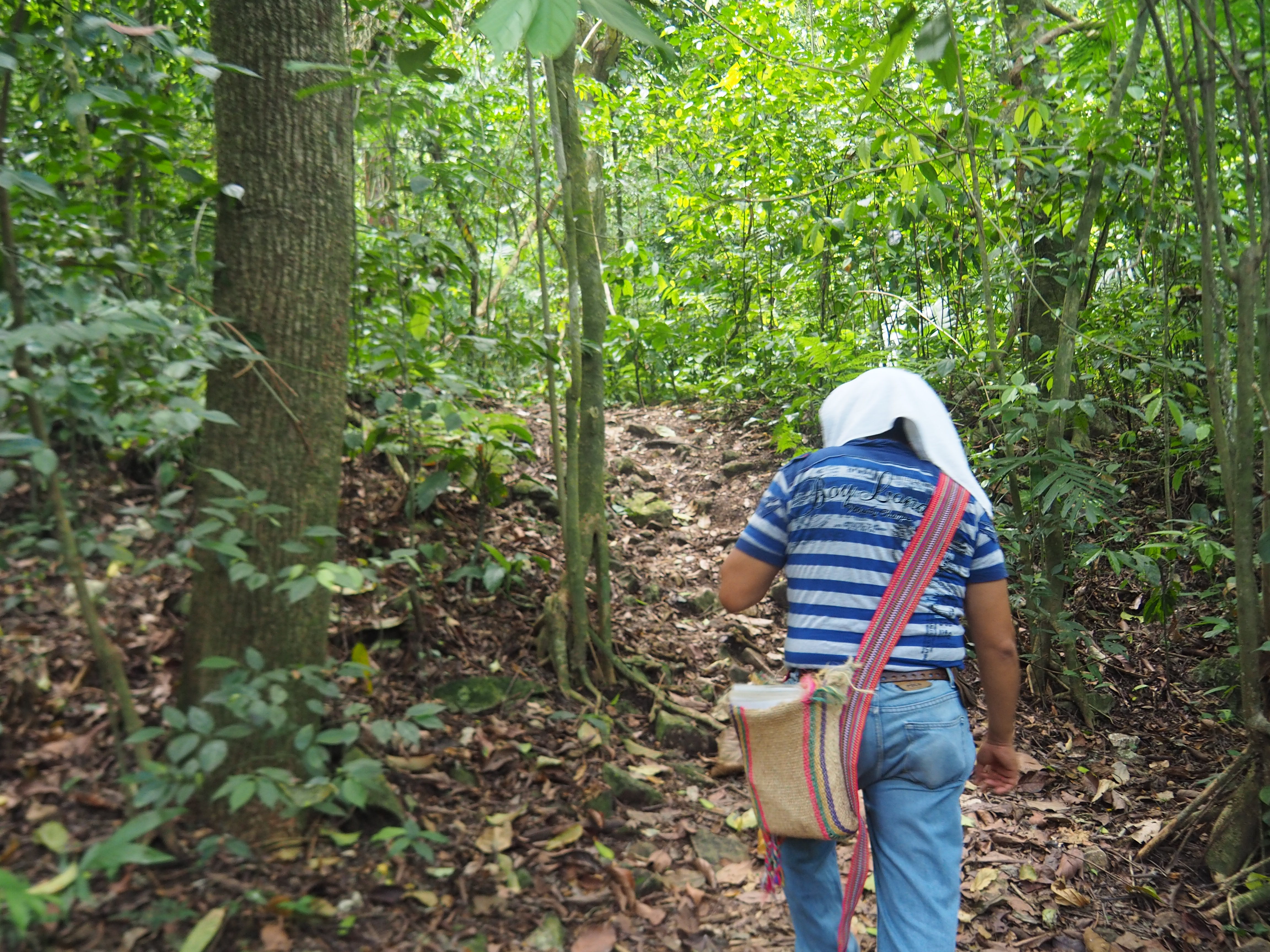
This jungle trek was truly one of the coolest things we have done so far – there is no way OHS in Australia would EVER let something like this occur. We were scurrying up embankments, clutching vines to maintain our balance as we pulled ourselves up, jumping over streams, and following what seemed like barely trodden paths all through the jungle – Nacho clearly knew where he was going, but as all other sounds except for the jungle disappeared, you could easily tell how scary it would be to be genuinely lost there!
Dave in a rare clearing on the path where we stopped for a drink break (again, the humidity was about 90%, intense!)
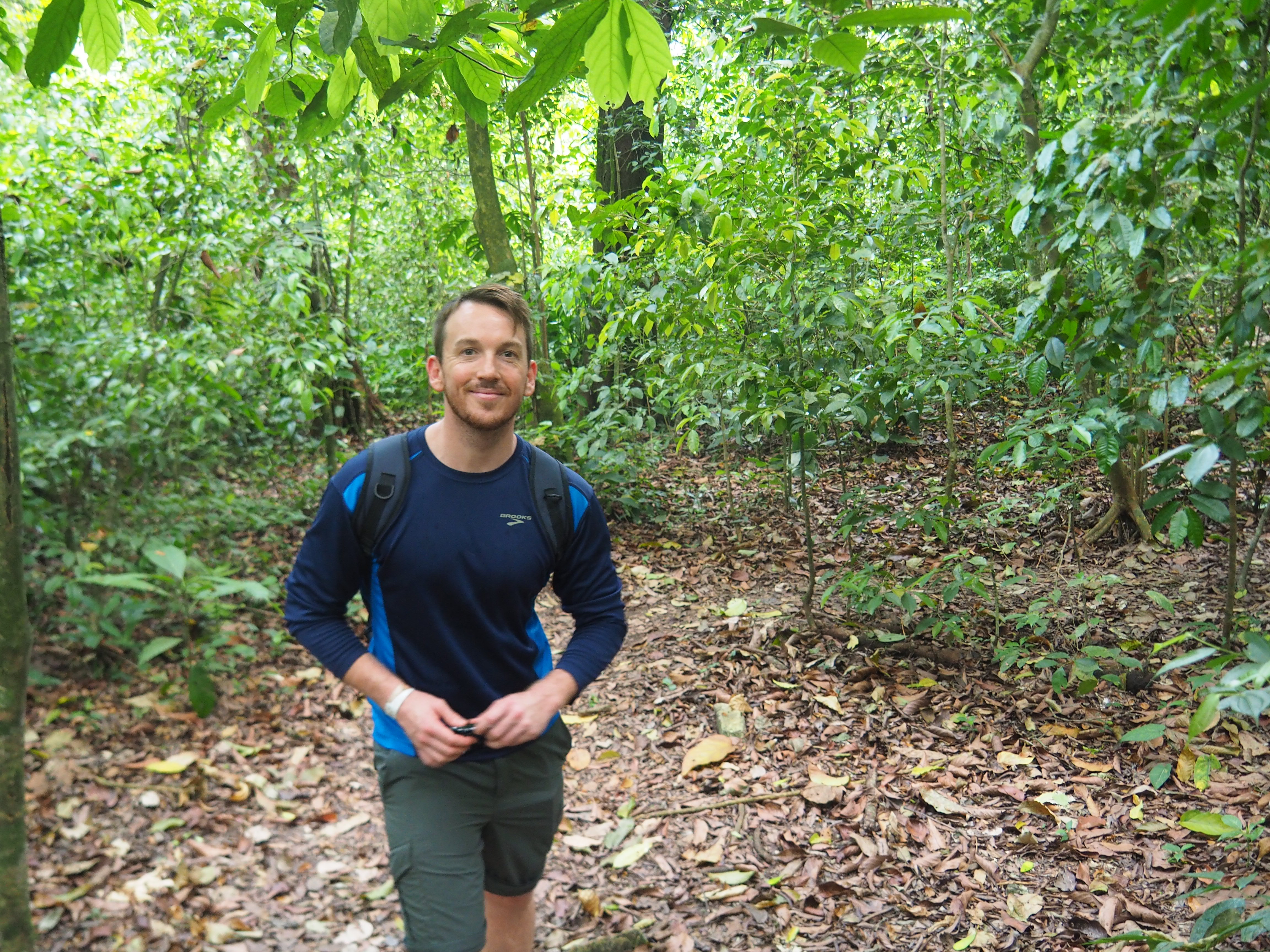
An example of an as-yet-unexcavated ruin, yet still part of the higher society city of Palenque, is visible in the jungle – can you see the ruins, and its window to the house? You can see the way the jungle has grown over and through the old structures, pretty amazing as this would have taken a good few hundred years!
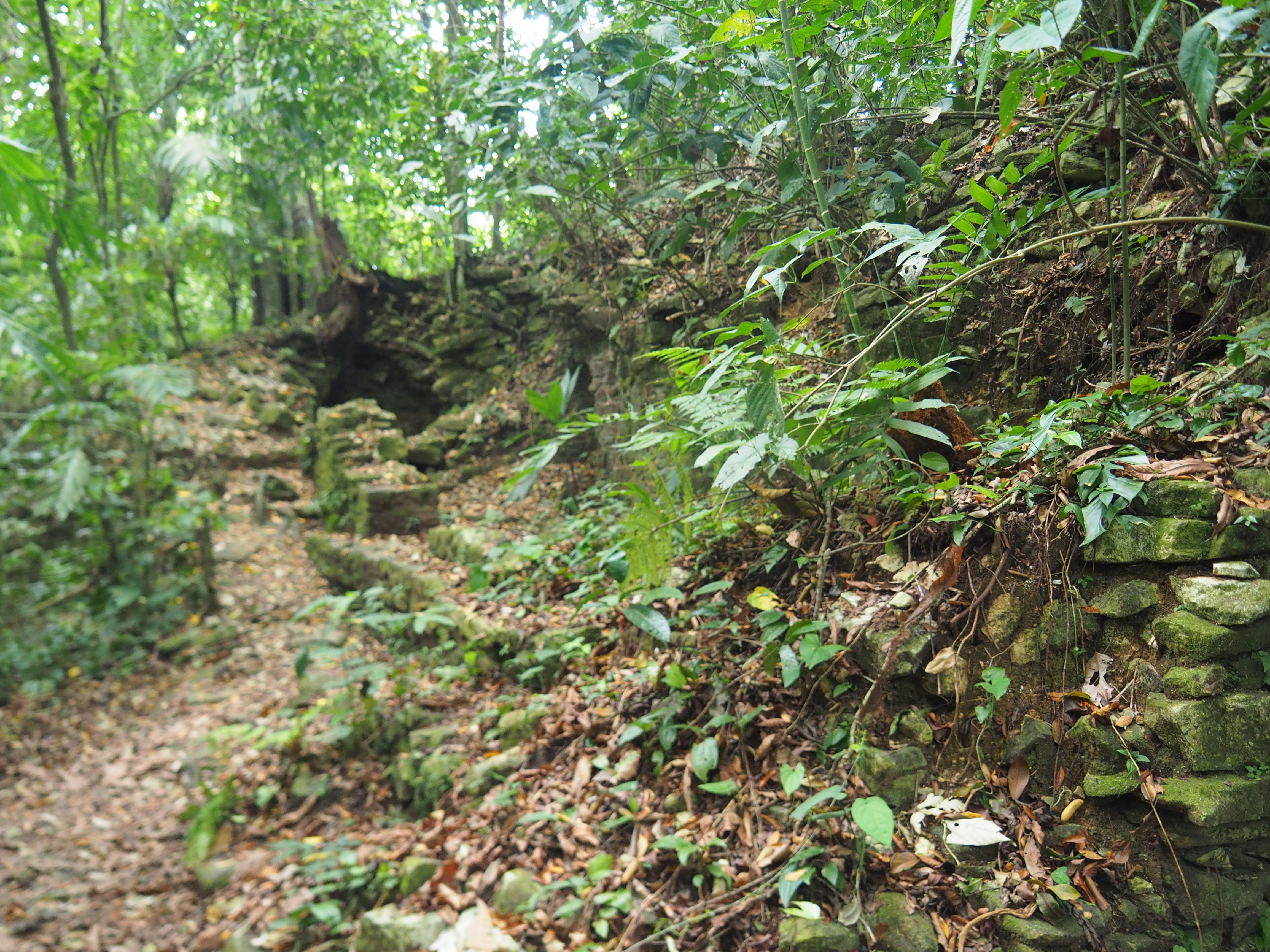
We saw rather than heard most of the wildlife, and of course, Nacho telling us that he often spots jaguars in the jungle (never with tourists, we are too loud, thank god!) ensured I remained in-between the two men haha!
Below is a blurry-ish photo of a howler monkey – apparently there are 12 families of them in the jungle, but we only spotted this one little guy.
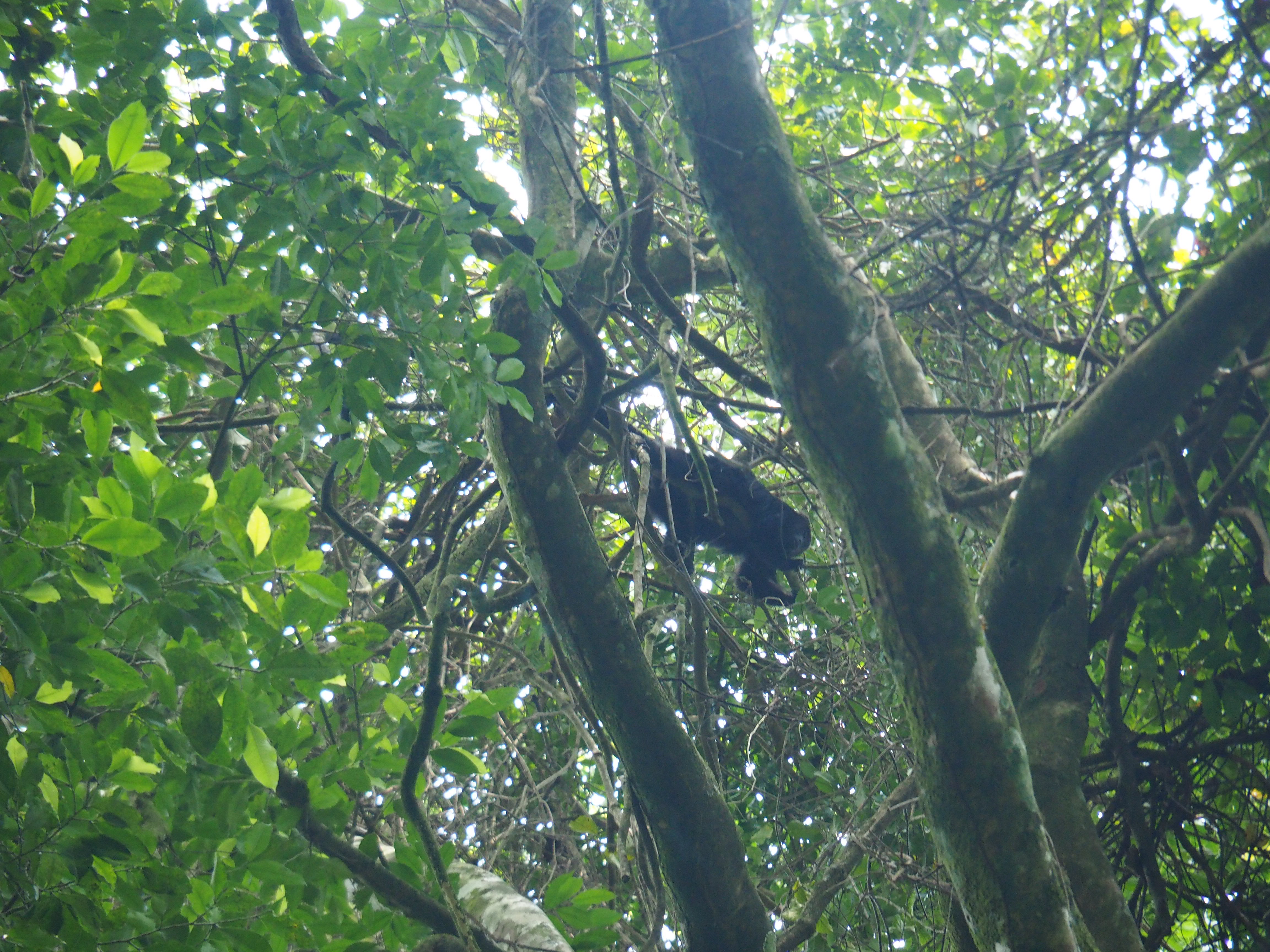
We detoured past a freshwater stream which used to be the Mayan’s aqueduct so they could divert water to all of the palace’s rooms, and where Nacho insisted we stop and wash our faces and have a drink of the fresh water. We jumped at the chance to cool off in the water but I couldn’t bring myself to drink any, who knows what was in it further upstream, someone else washing their sweaty body?!
Whilst we were trekking Nacho told us all about medicinal plants and customs, even the hallucinogenic mushrooms the higher society used to partake in – we saw wild papaya trees and learnt loads more about the Mayan people.
Last stop was this amazing waterfall, where the stream gushed out over a collection of rocks about 10 metres tall over about 20 metres distance, lots of local kids were there having a swim – it was super pretty and if we had had our bathers, i think we would have joined them!
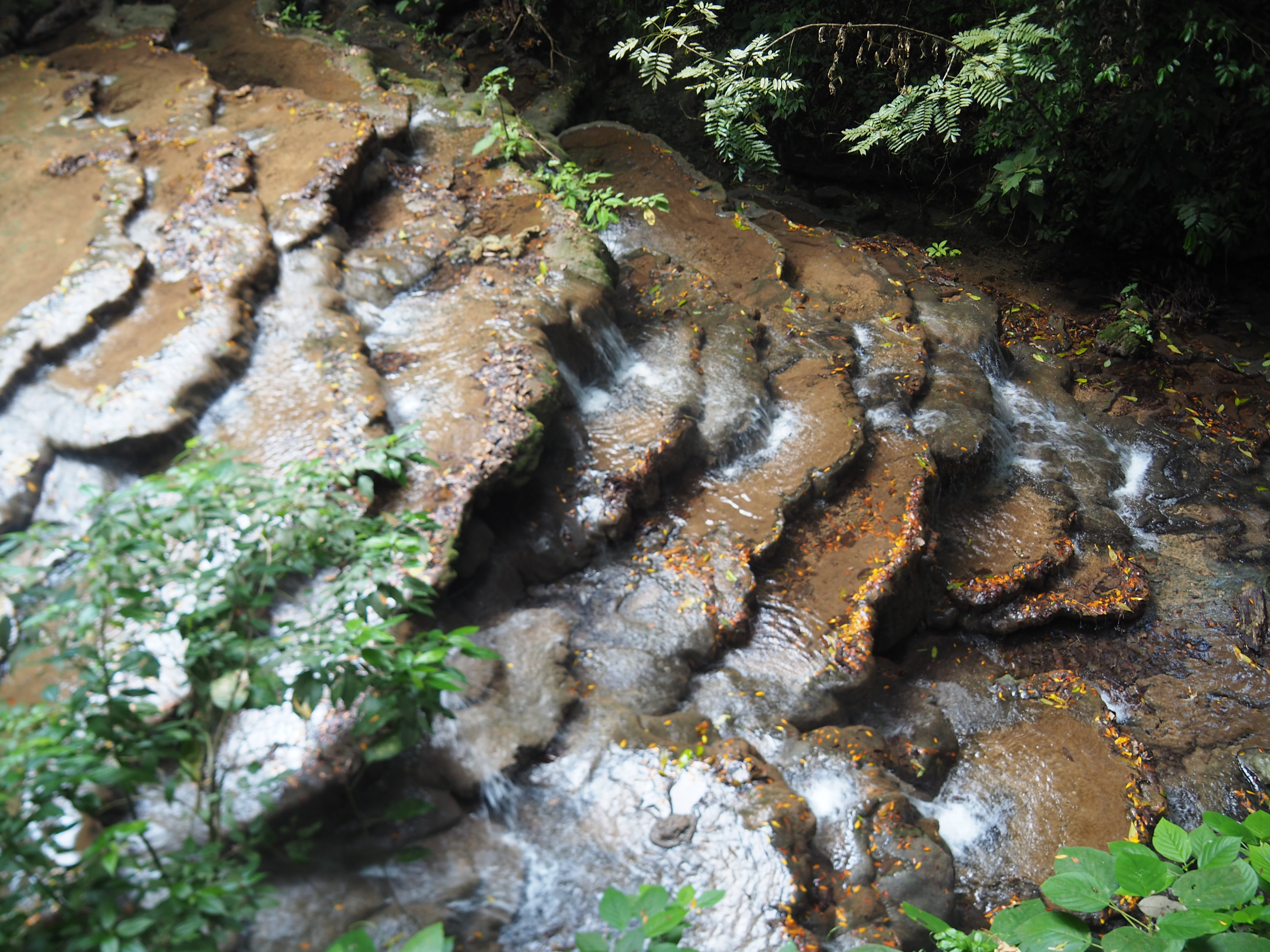
This day was definitely worth it, and even though it was hot and humid at the ruins, it was most certainly a highlight and I would highly recommend anyone interested in Mayan history to go visit, and ask for Nacho!
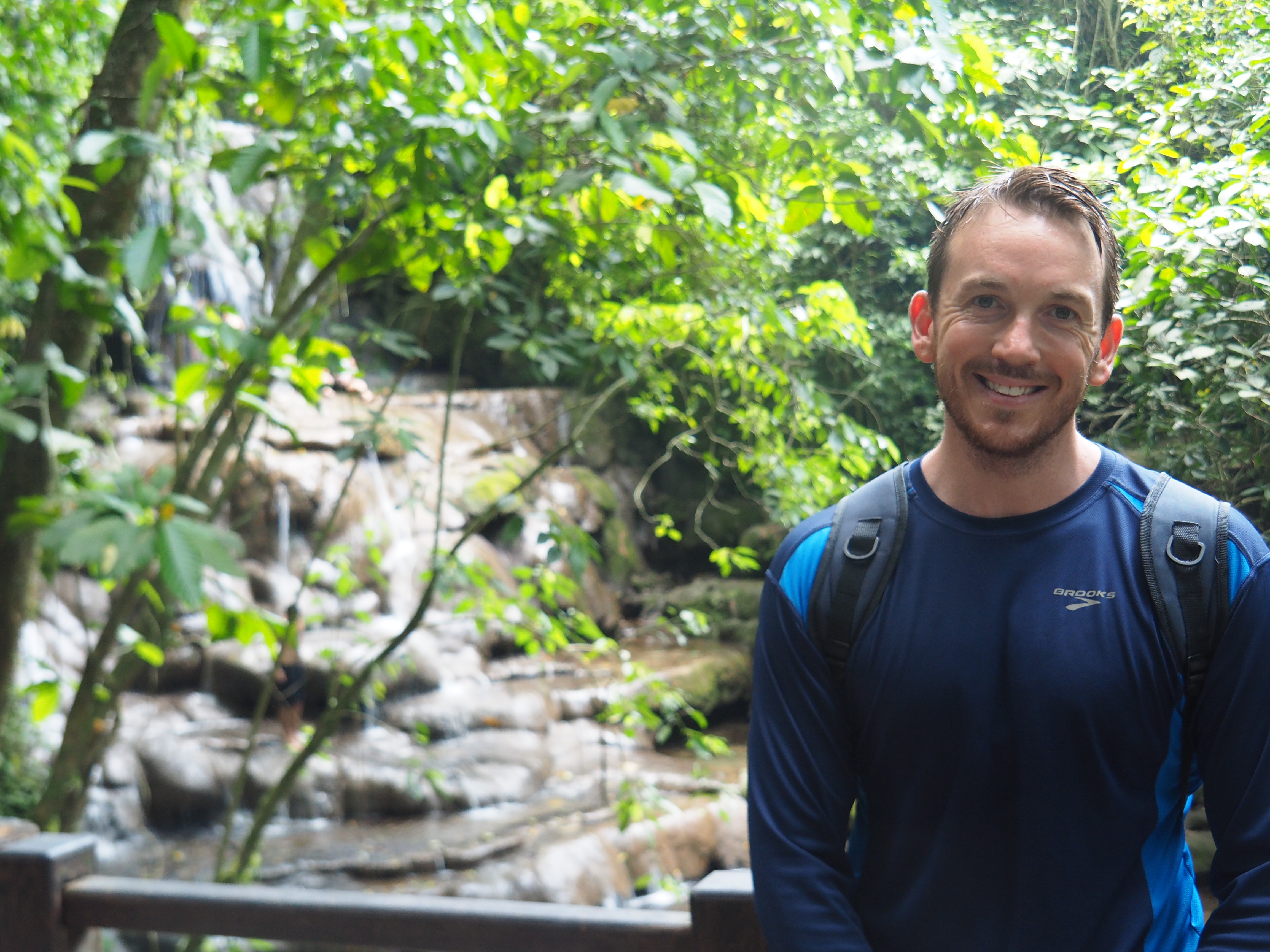
All in all, we thoroughly enjoyed our time in Palenque (minus the tummy bug of course, although Dave enjoyed the time by the pool reading his book and sinking a few cold cervazas!), and despite feeling slightly ‘ruined out’ by the end of it, each of the ruins added something unique and different, making the whole experience thoroughly worthwhile.
Next stop, Merida and the Yucatan!
